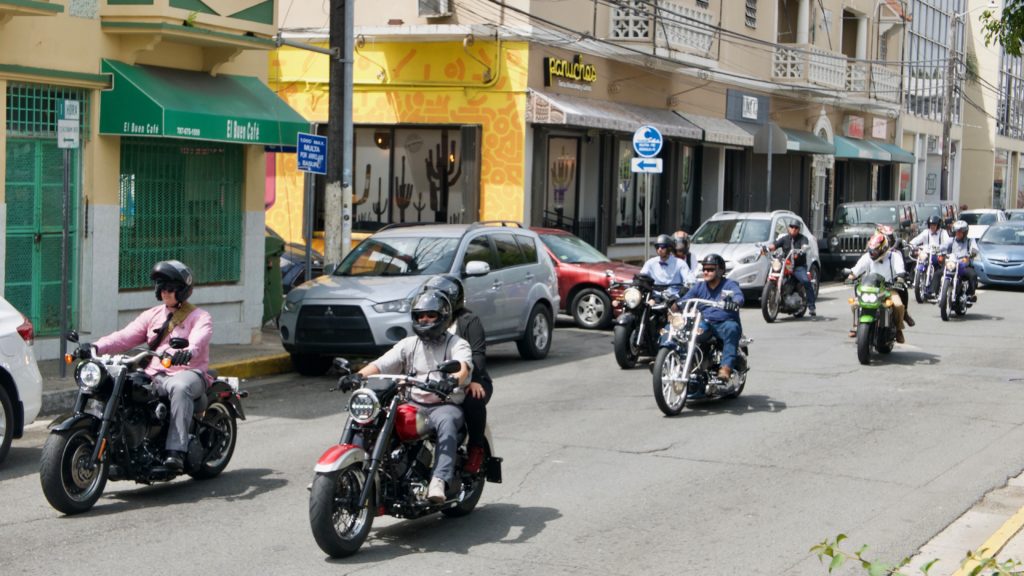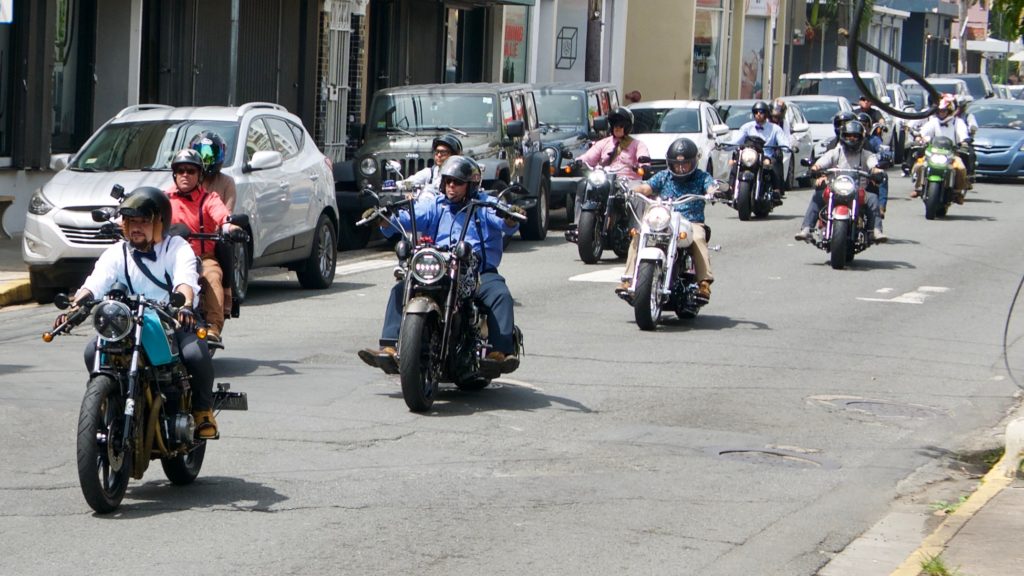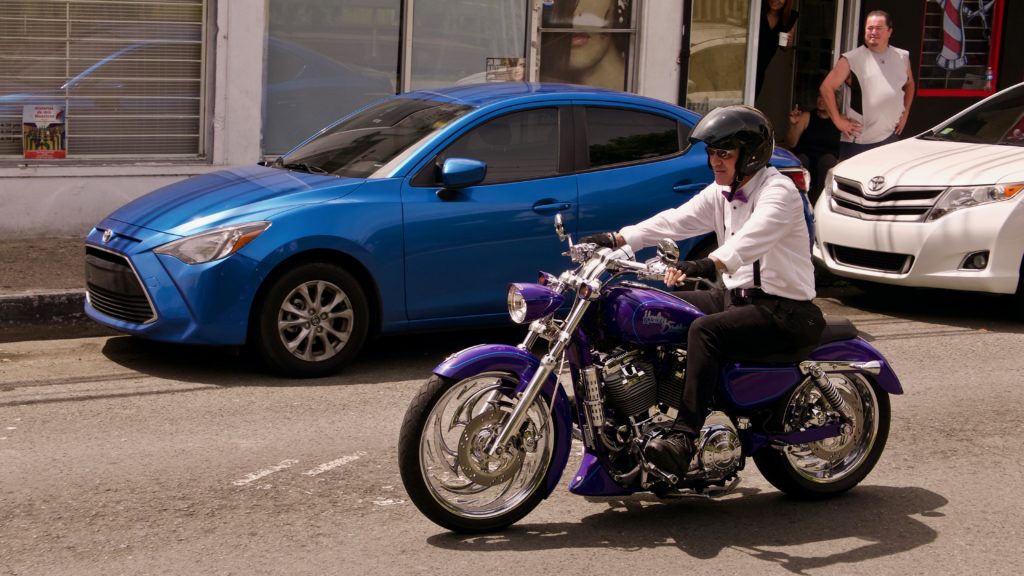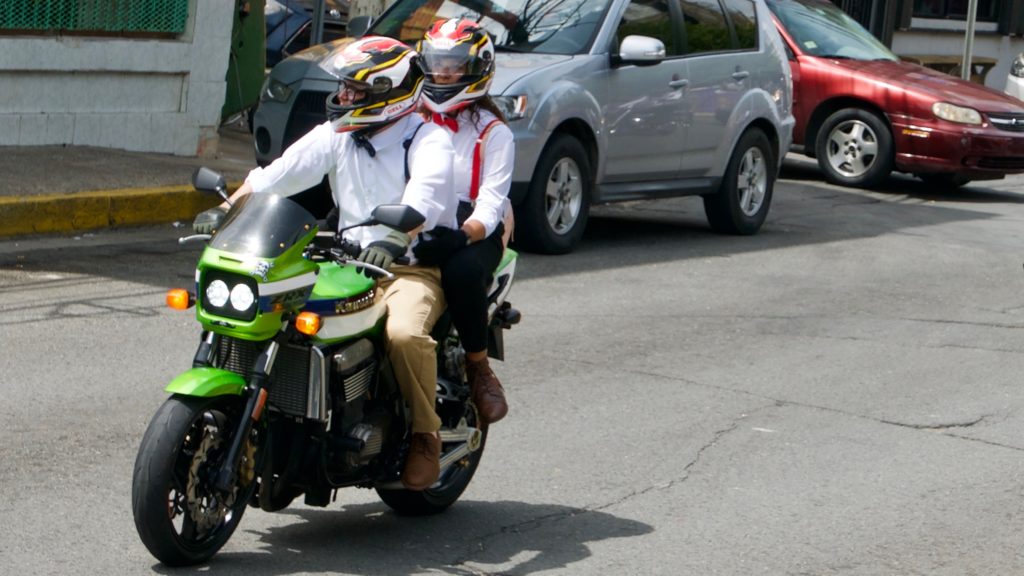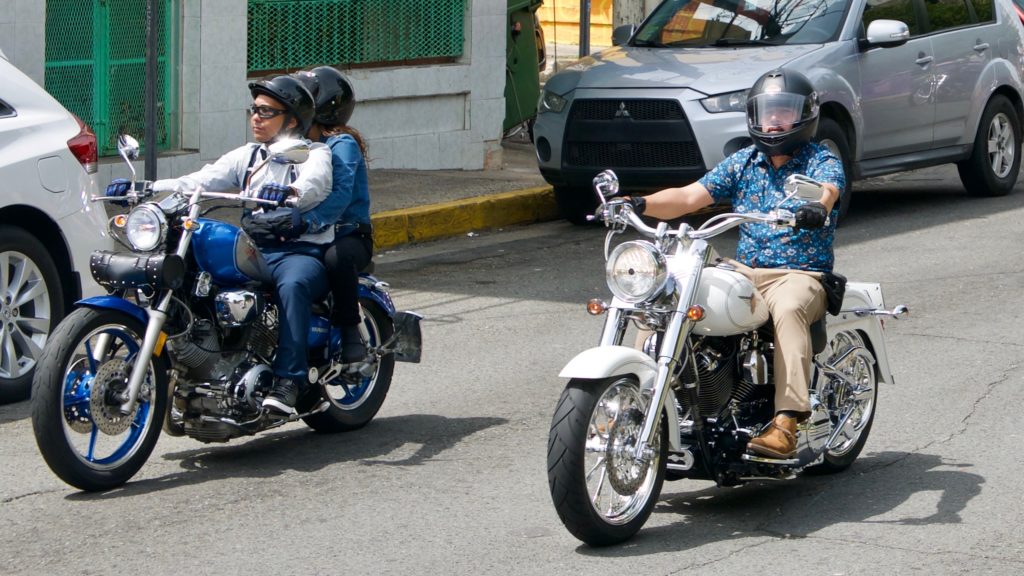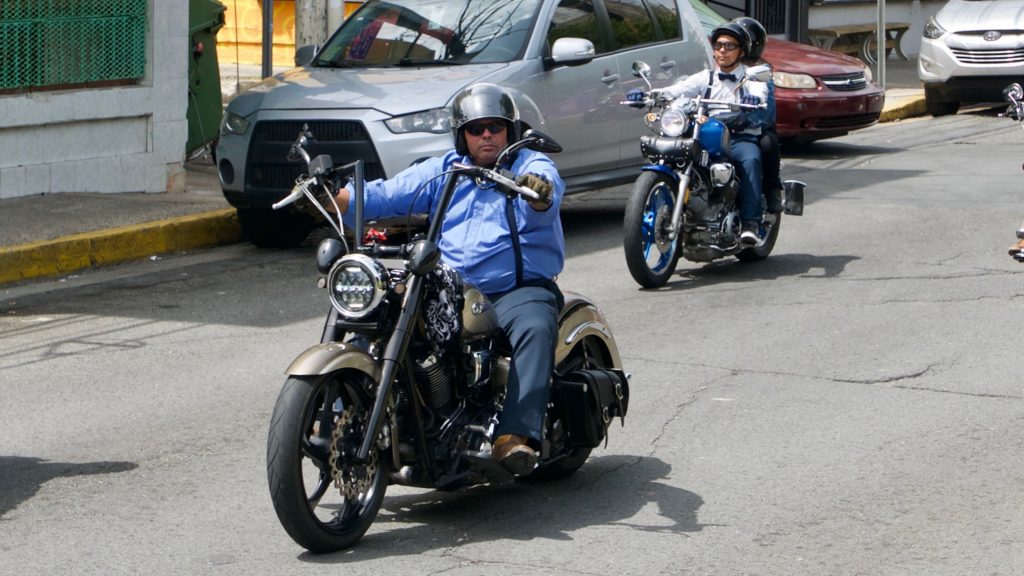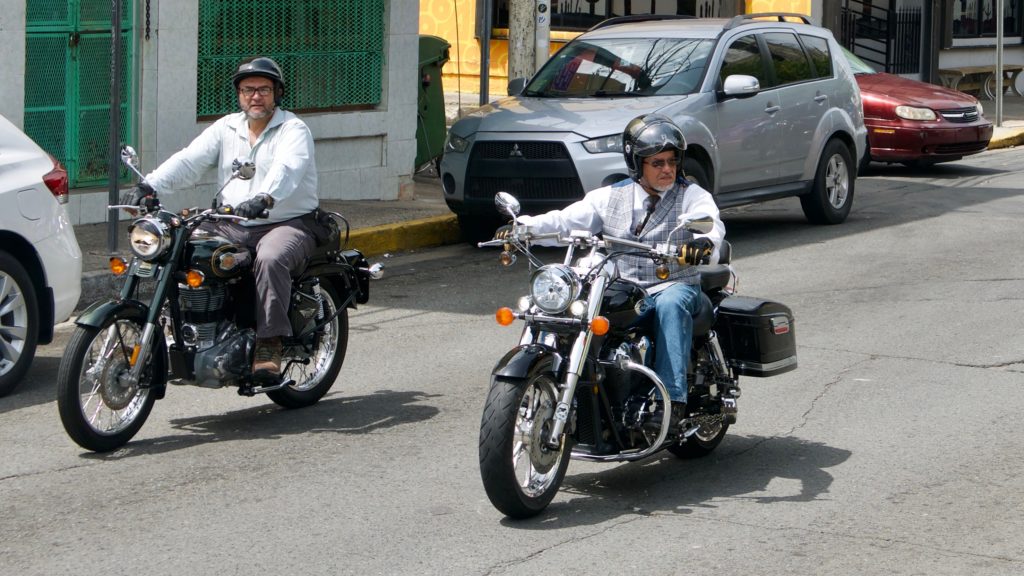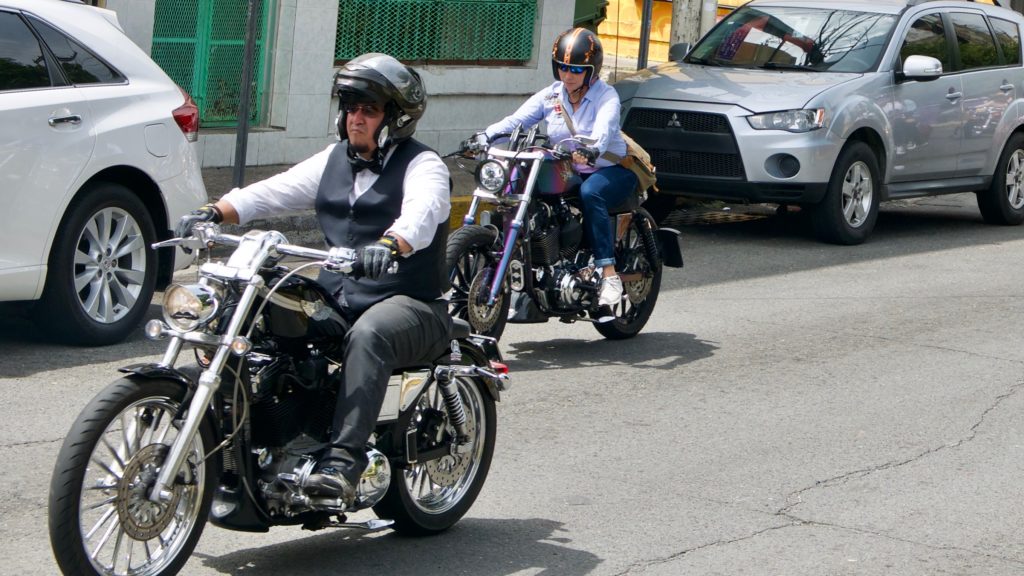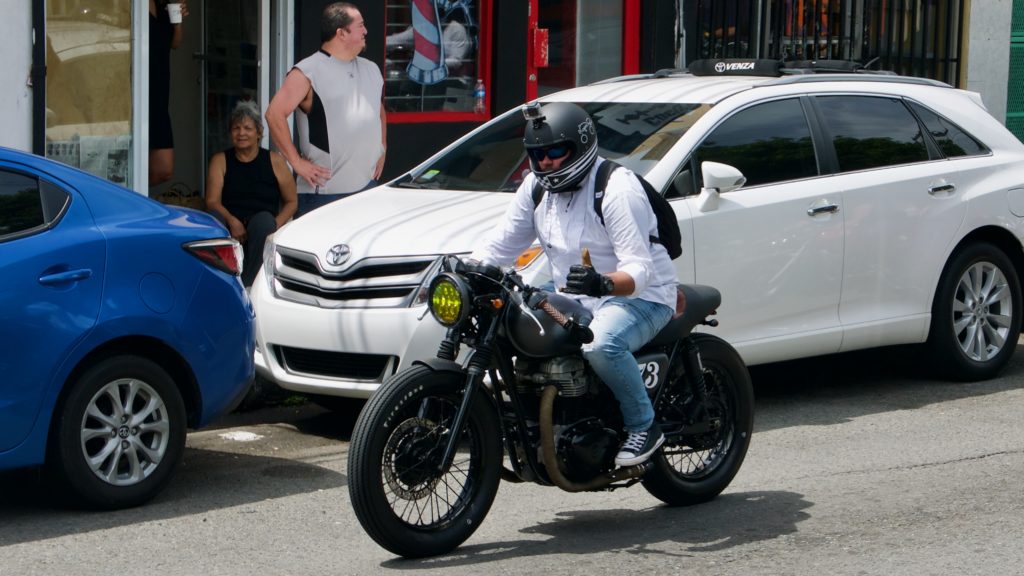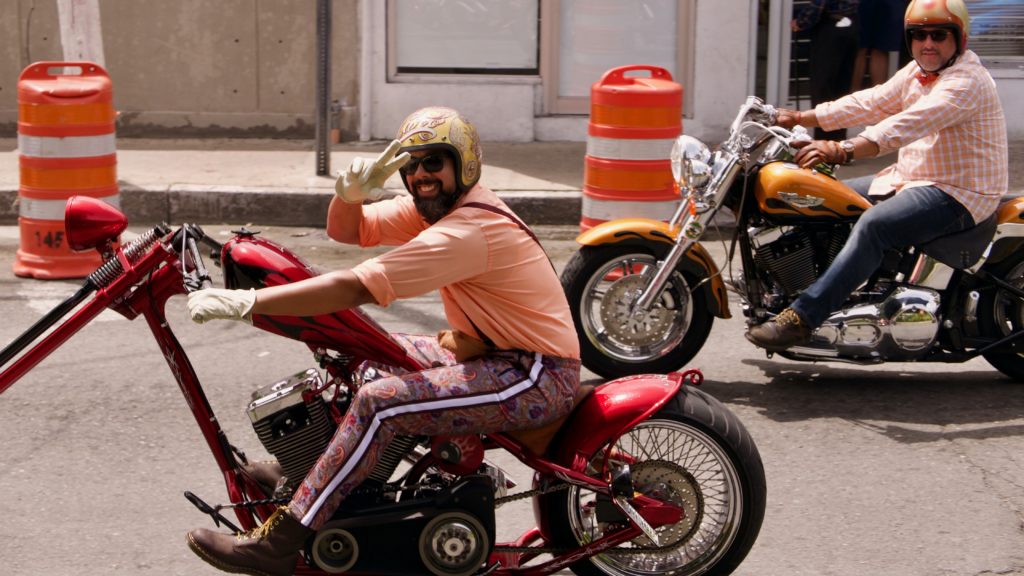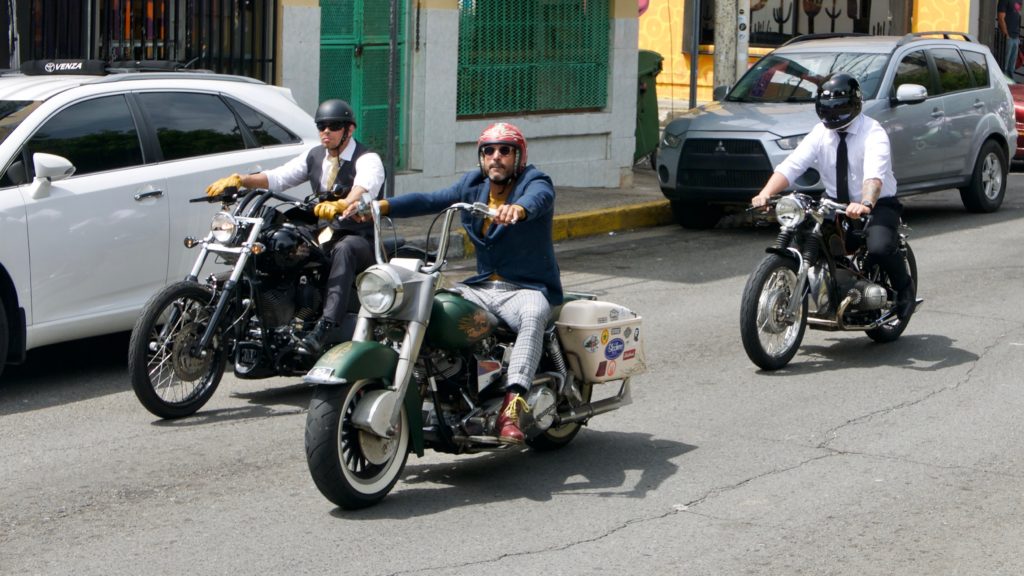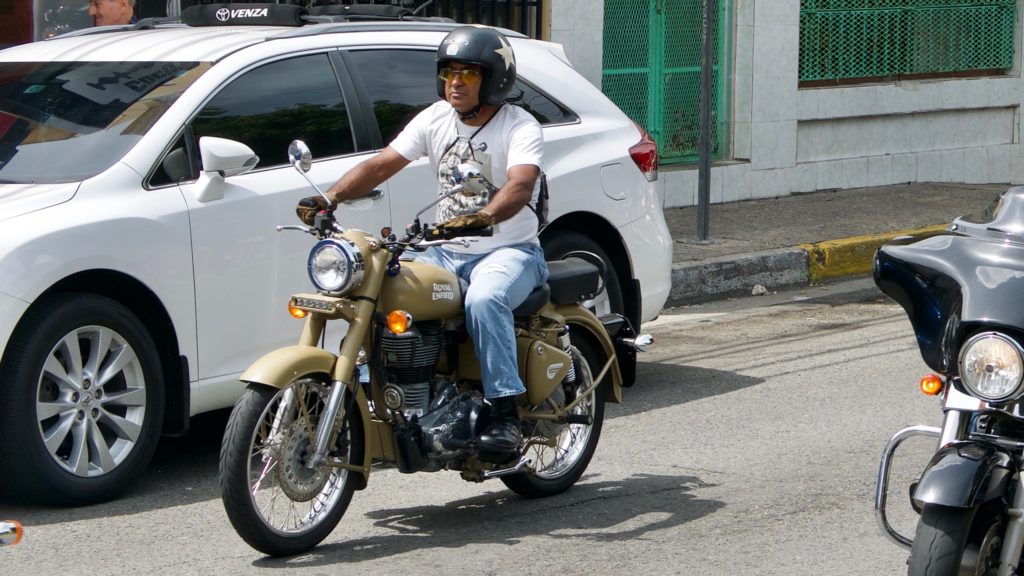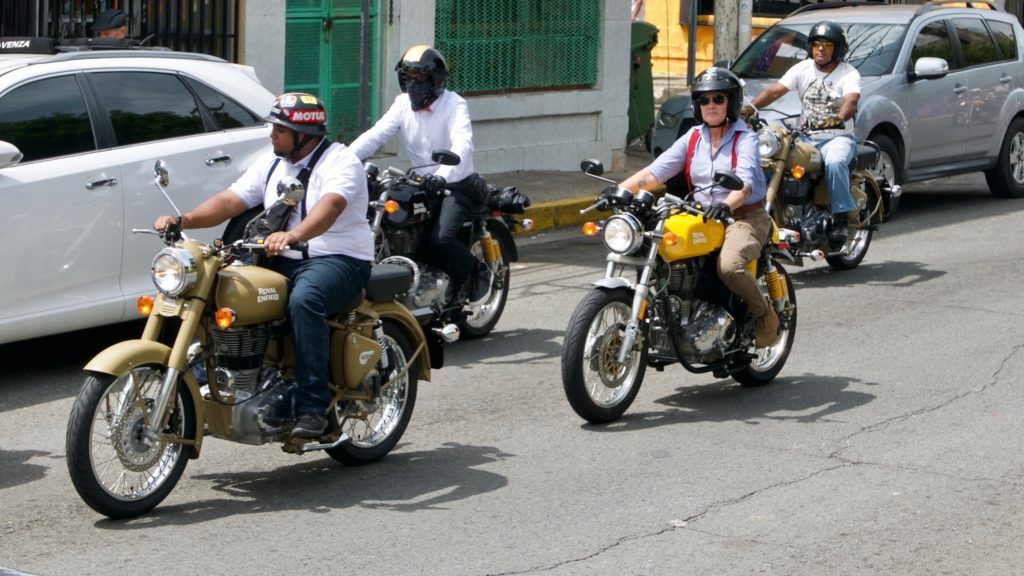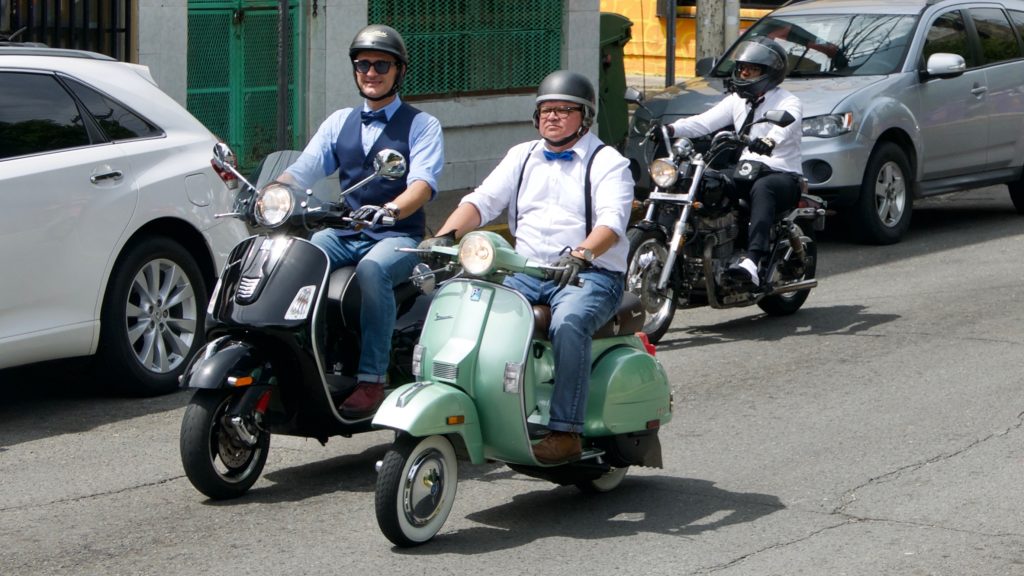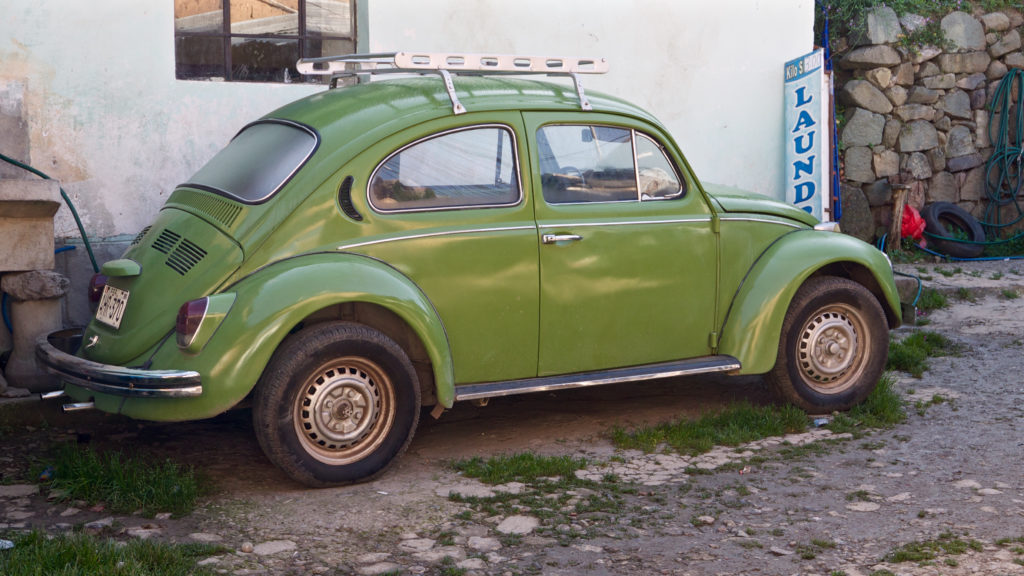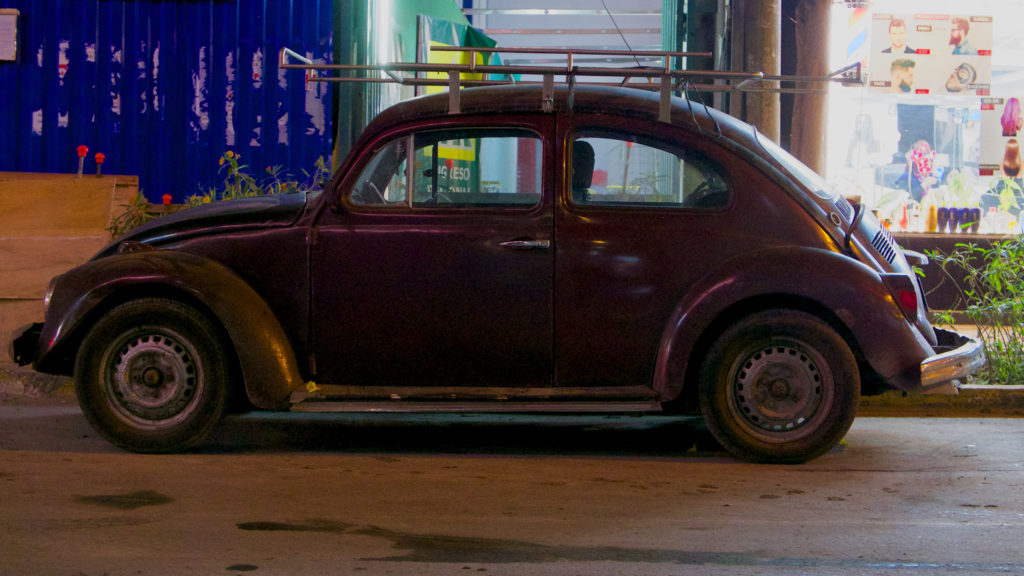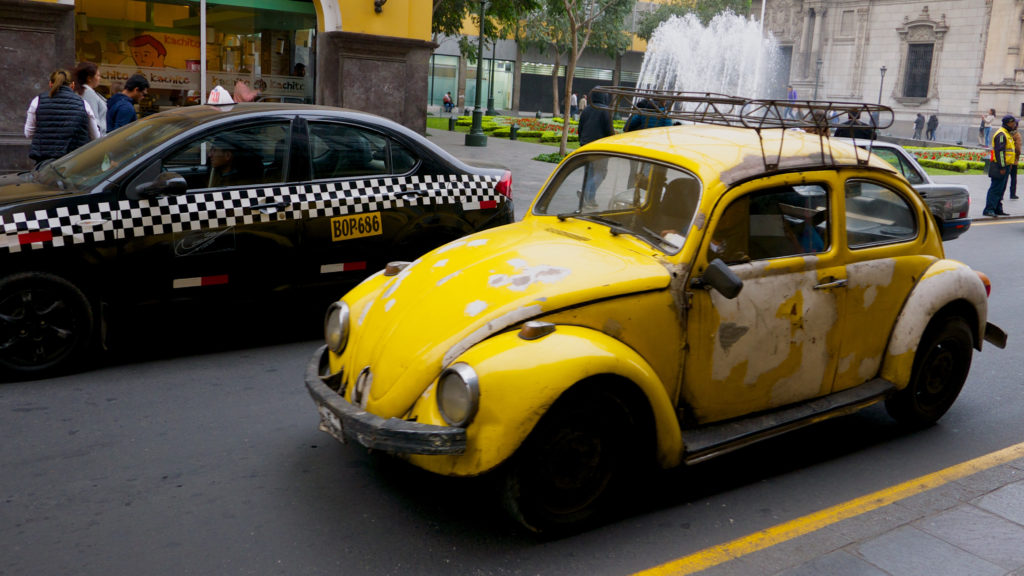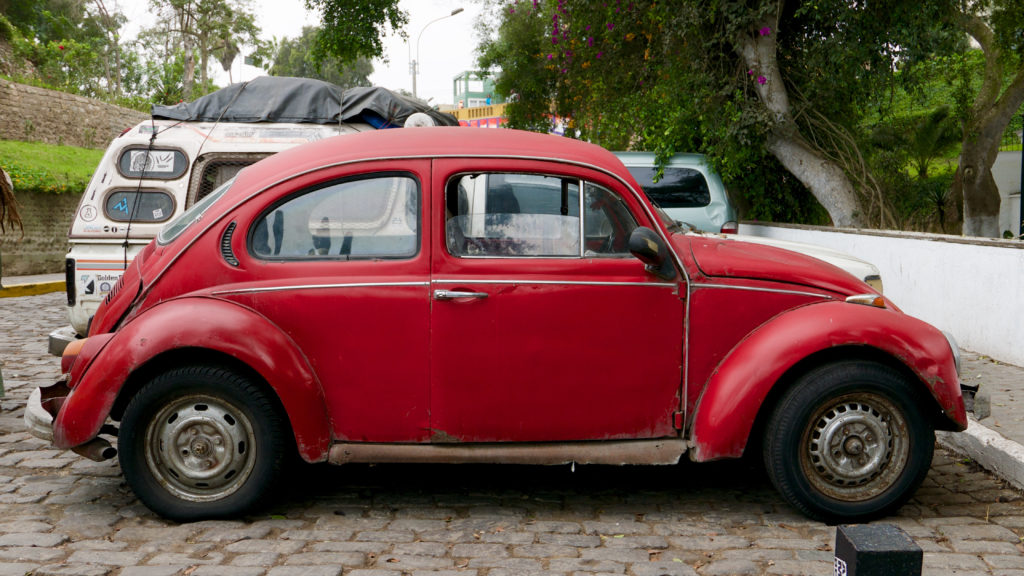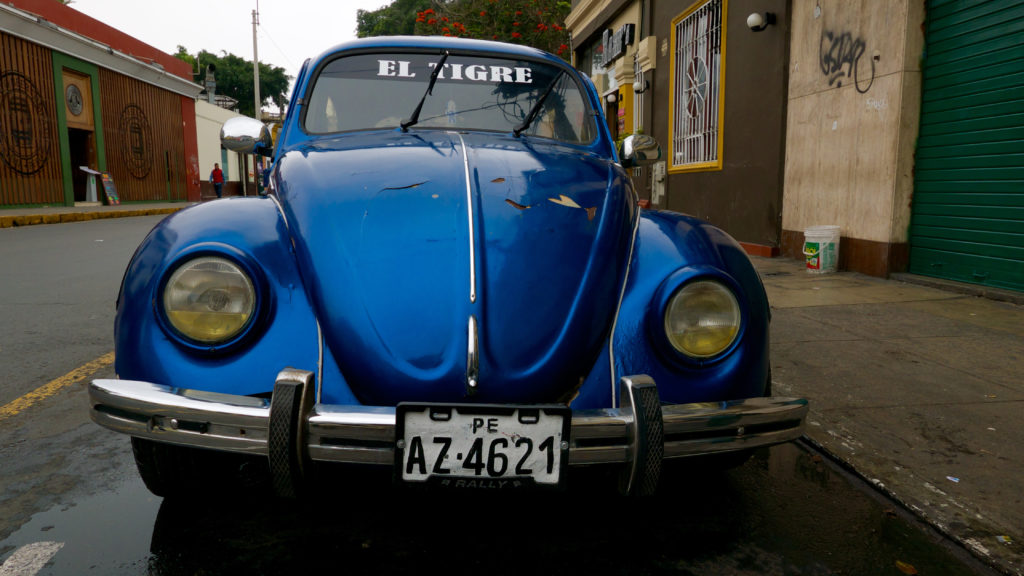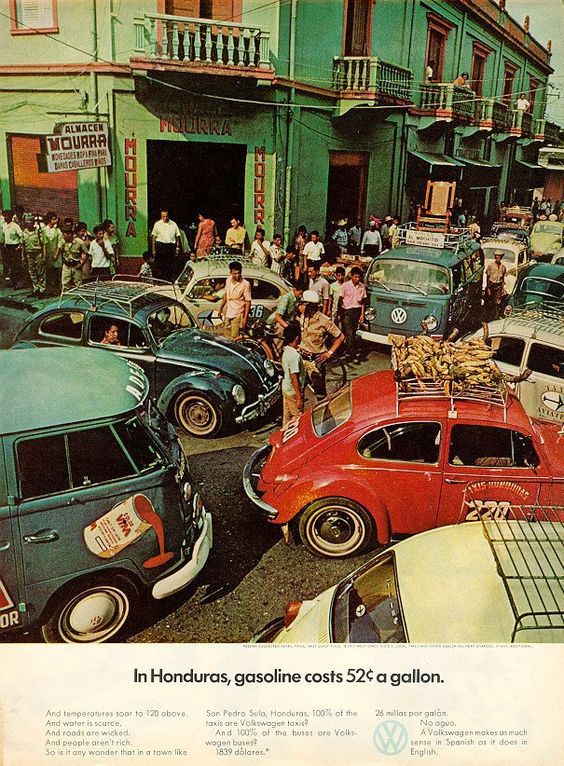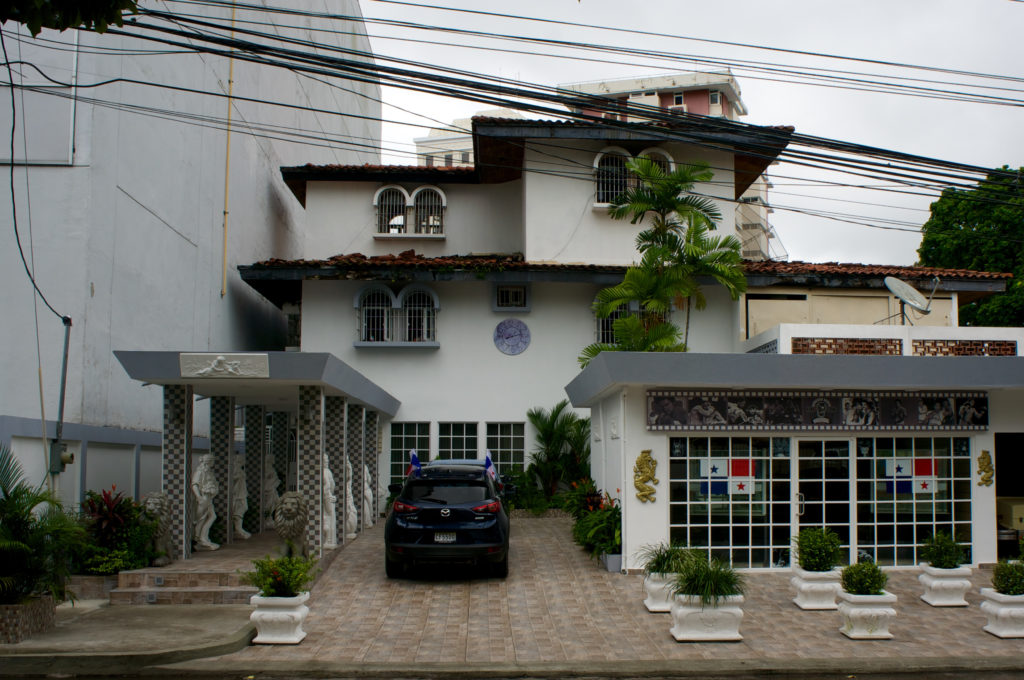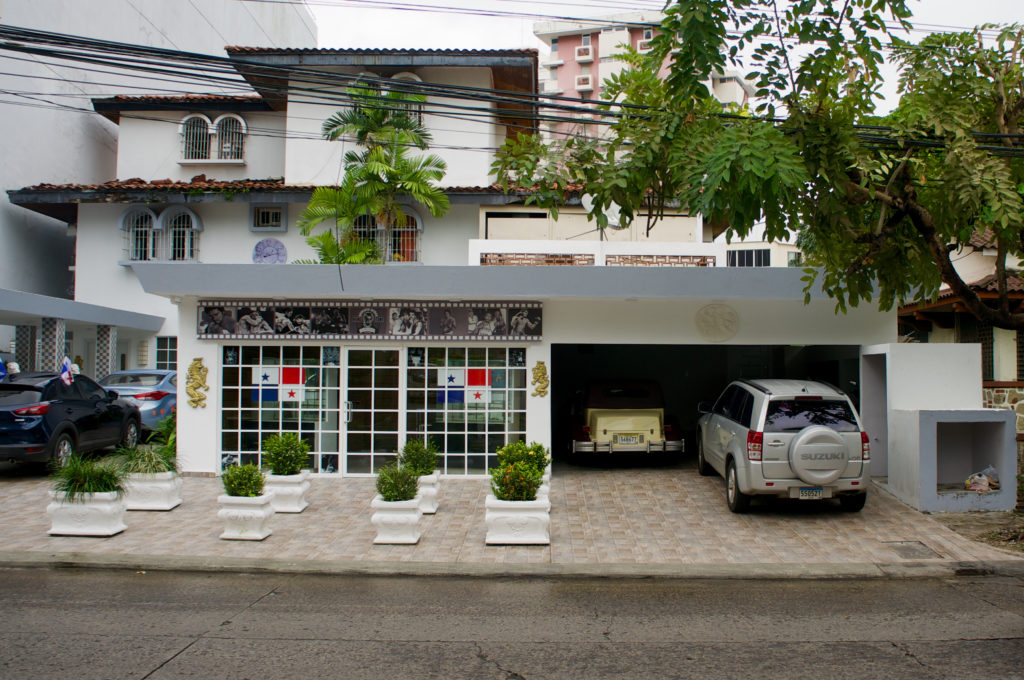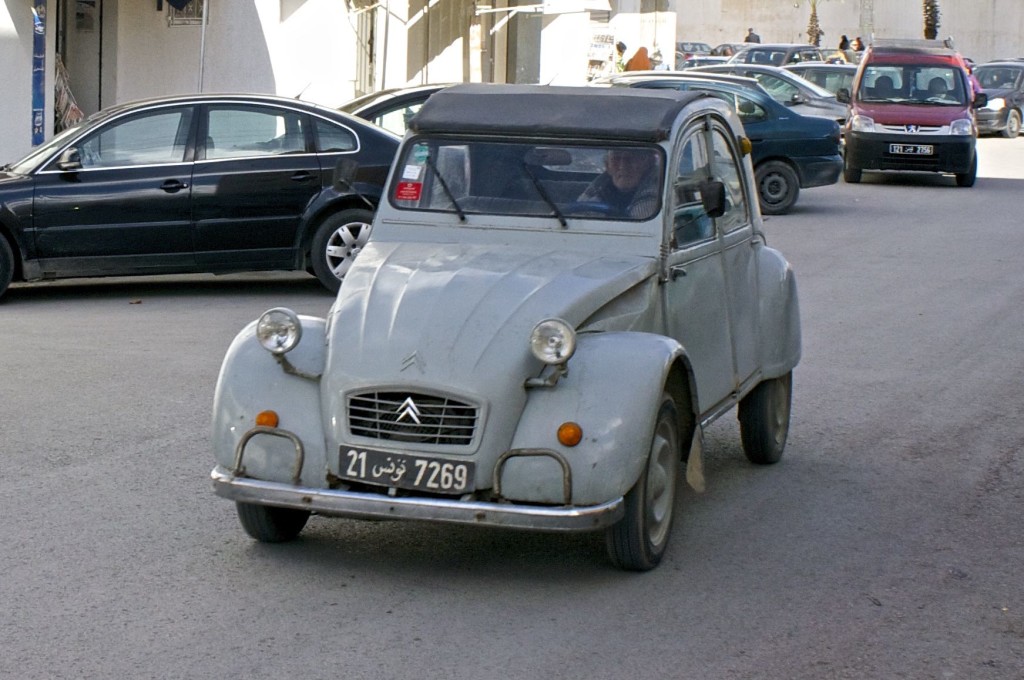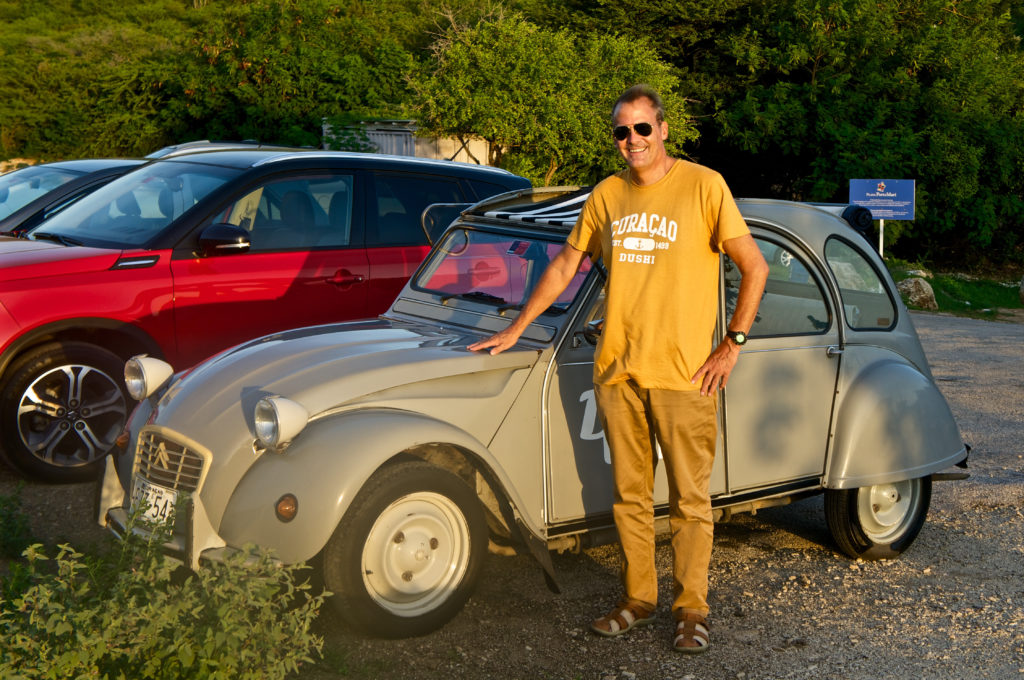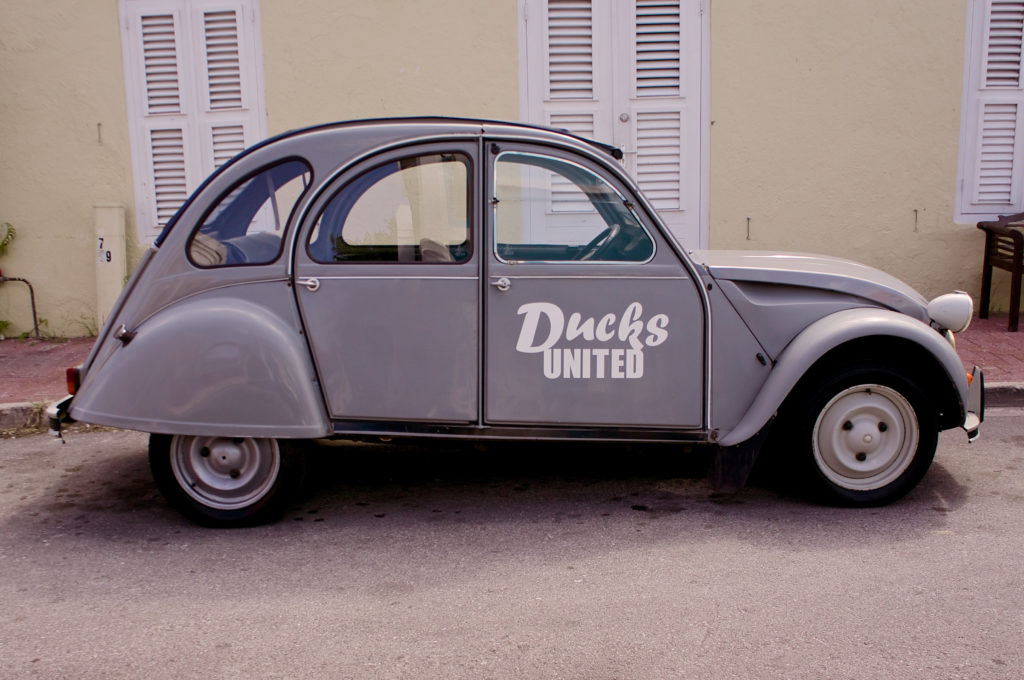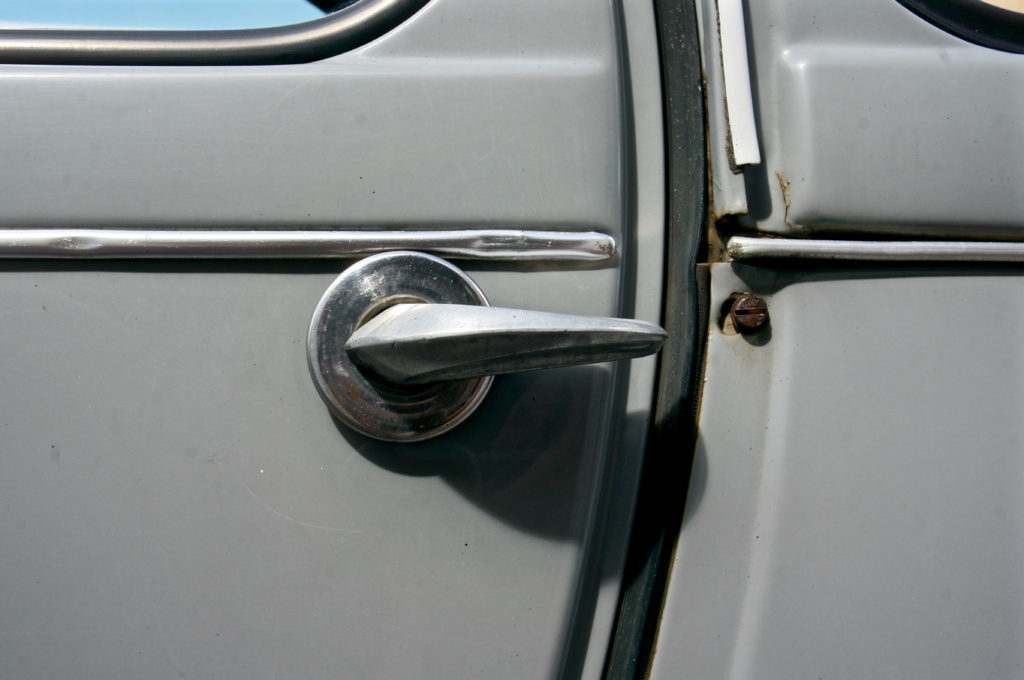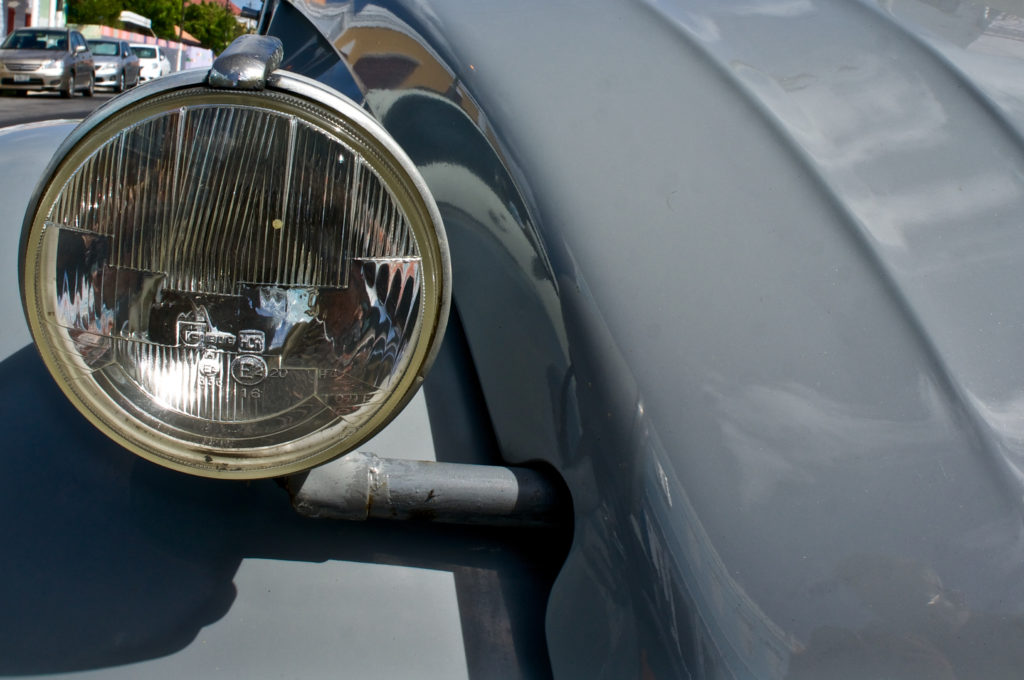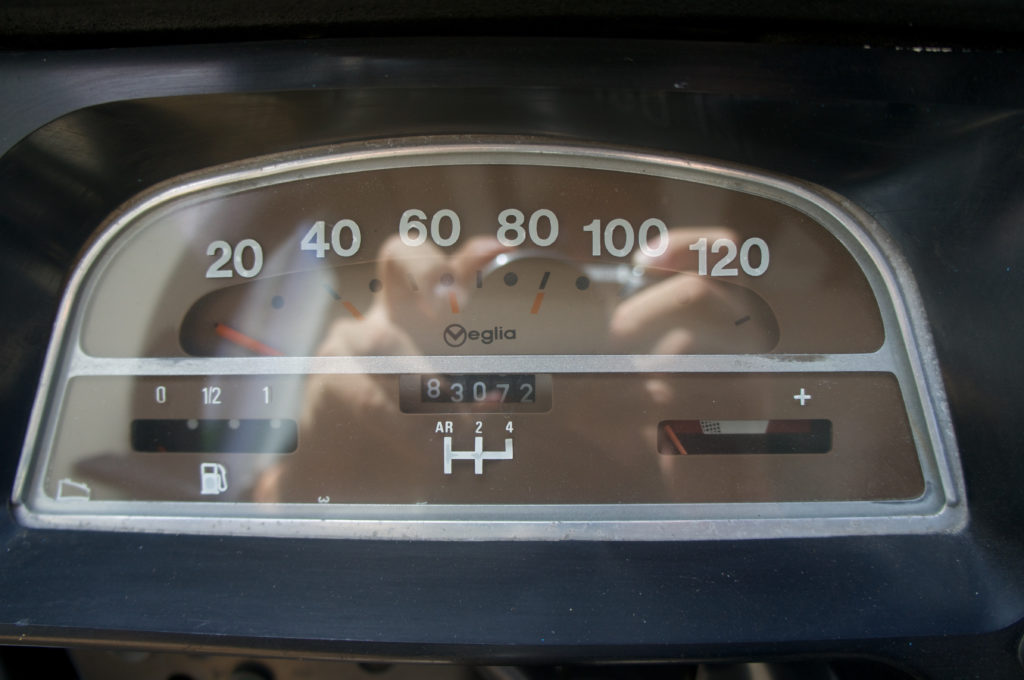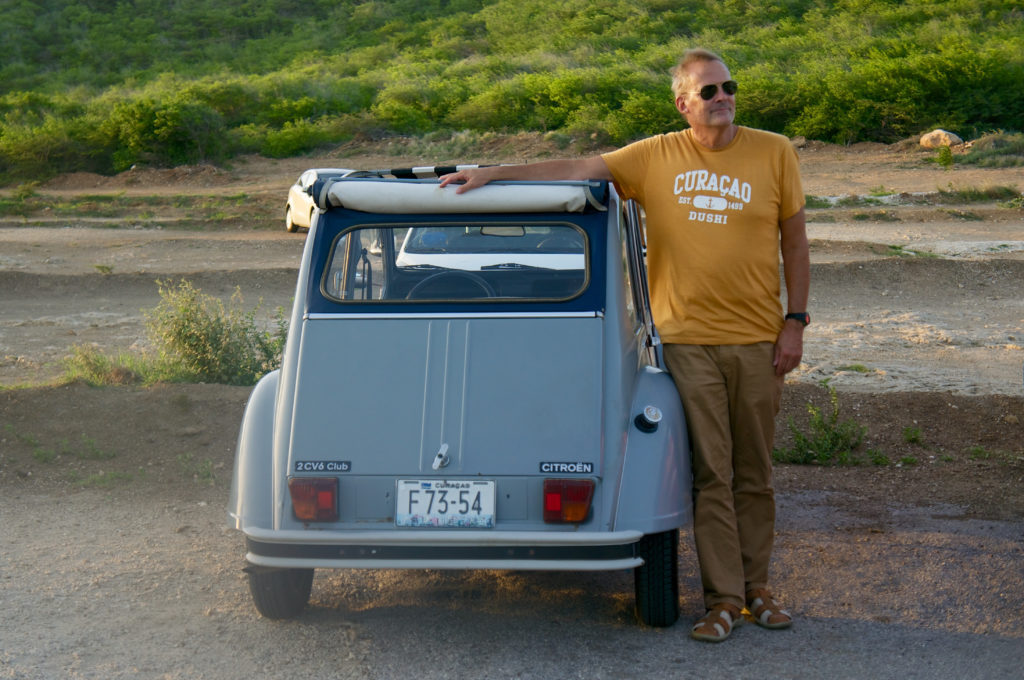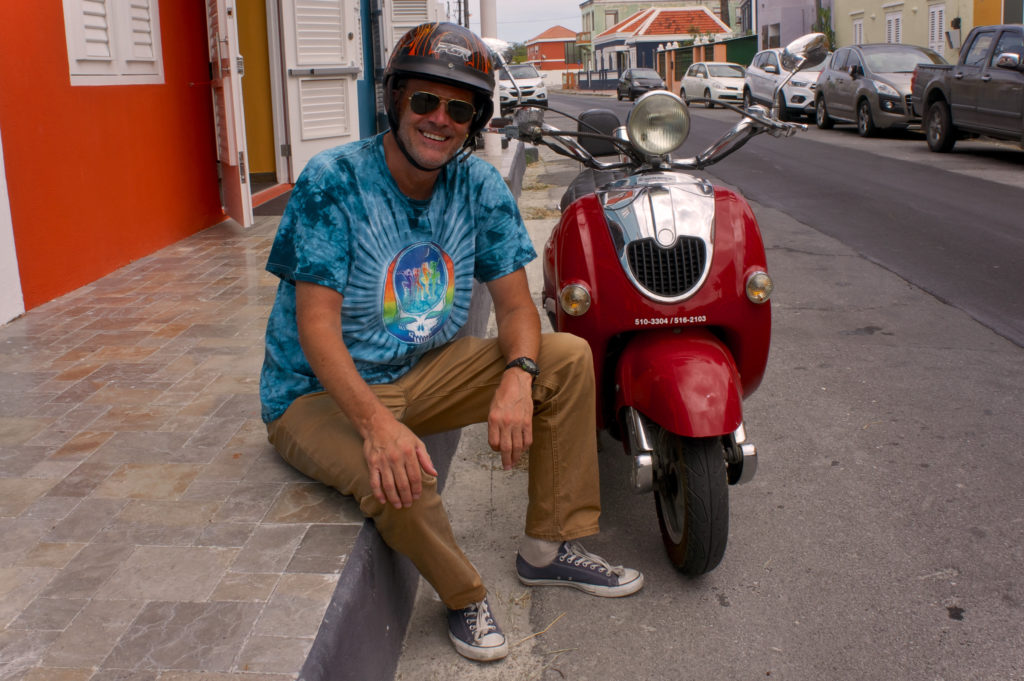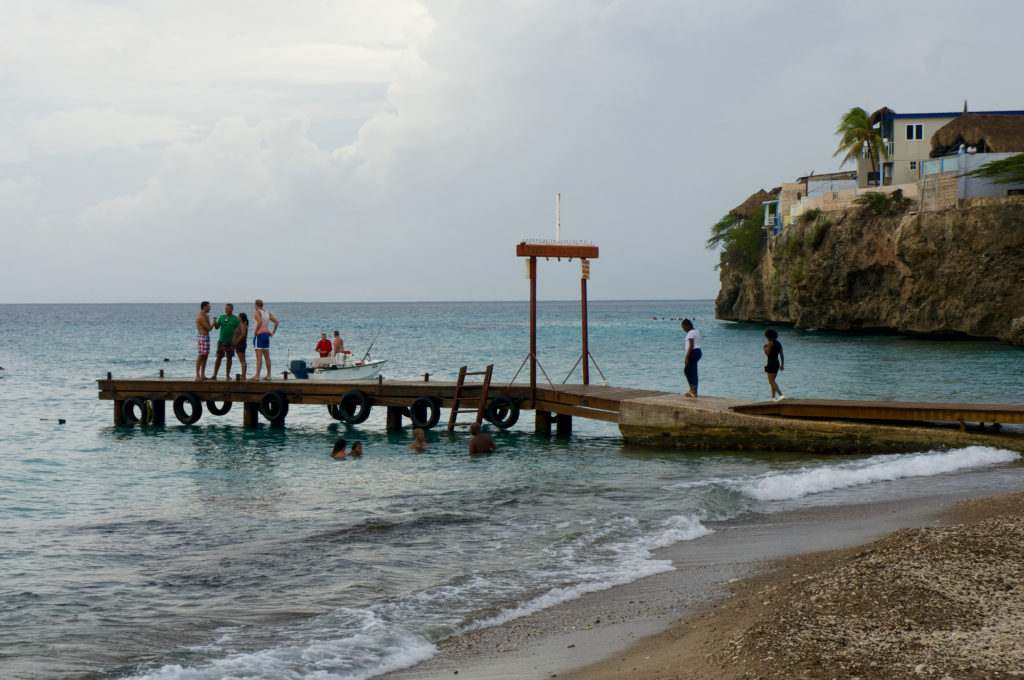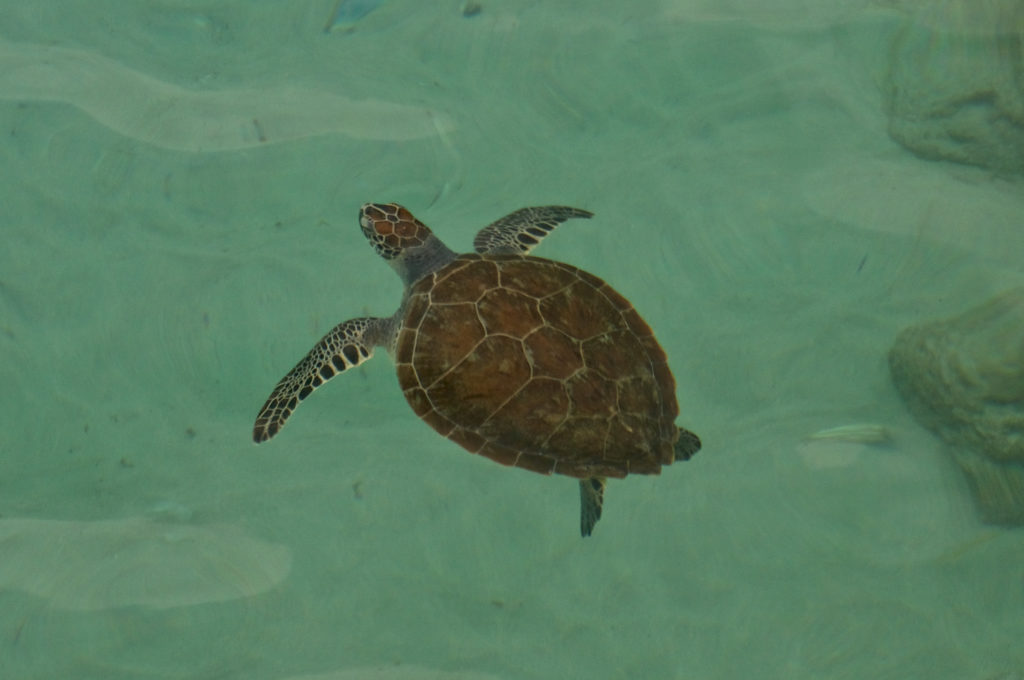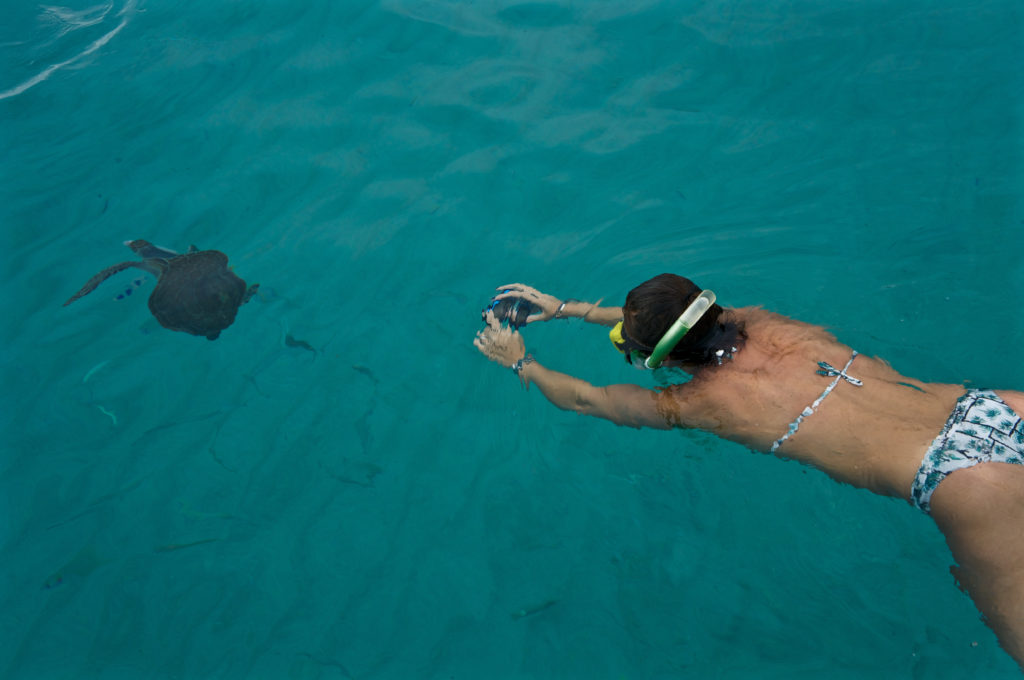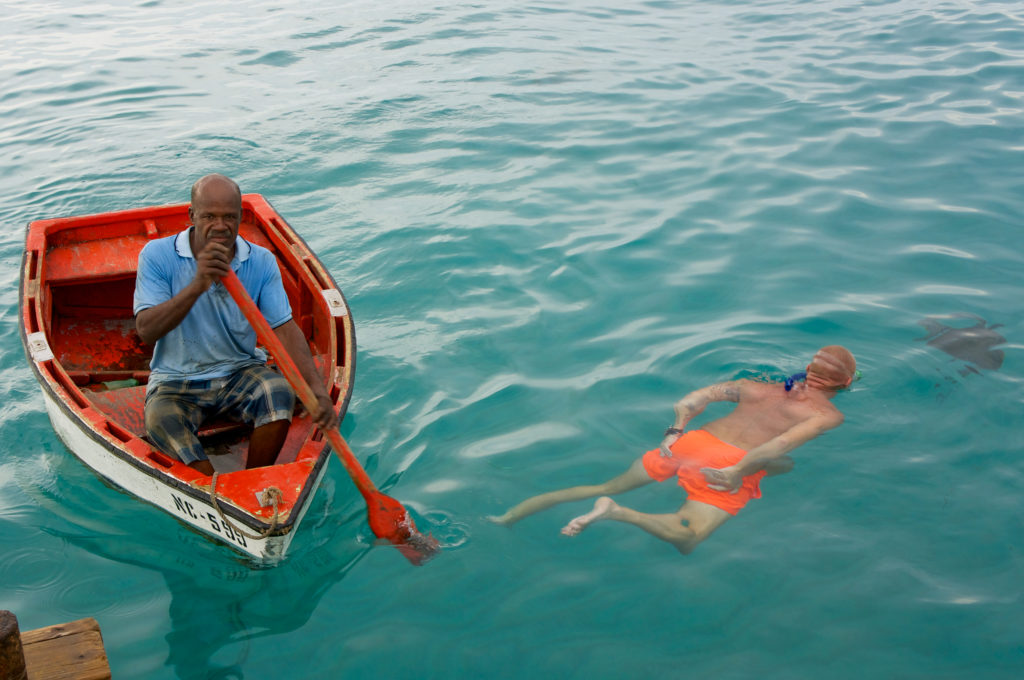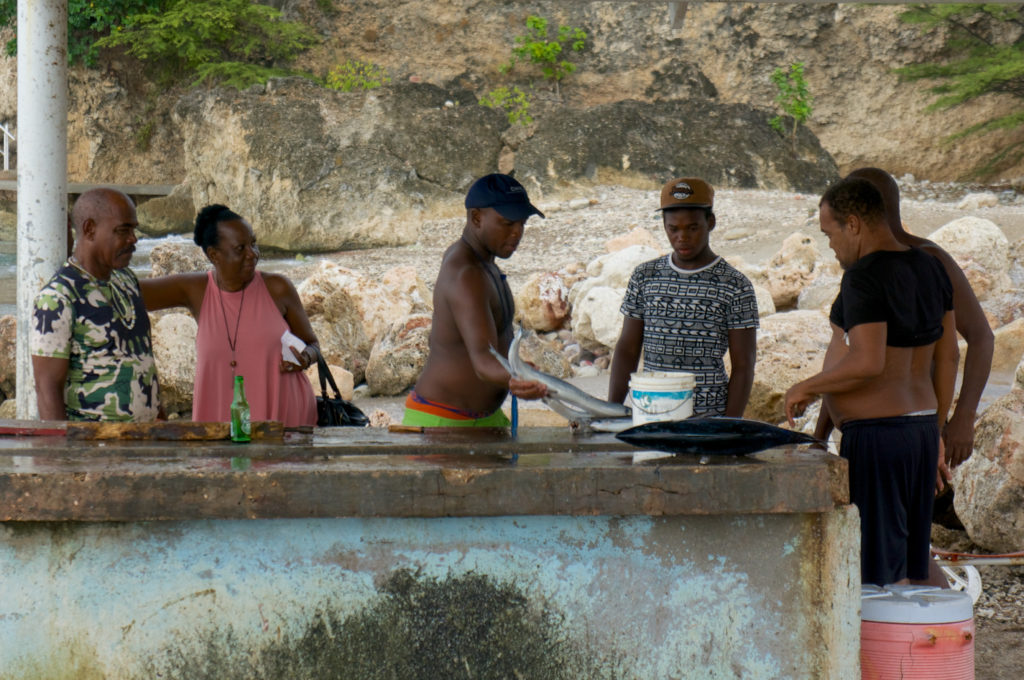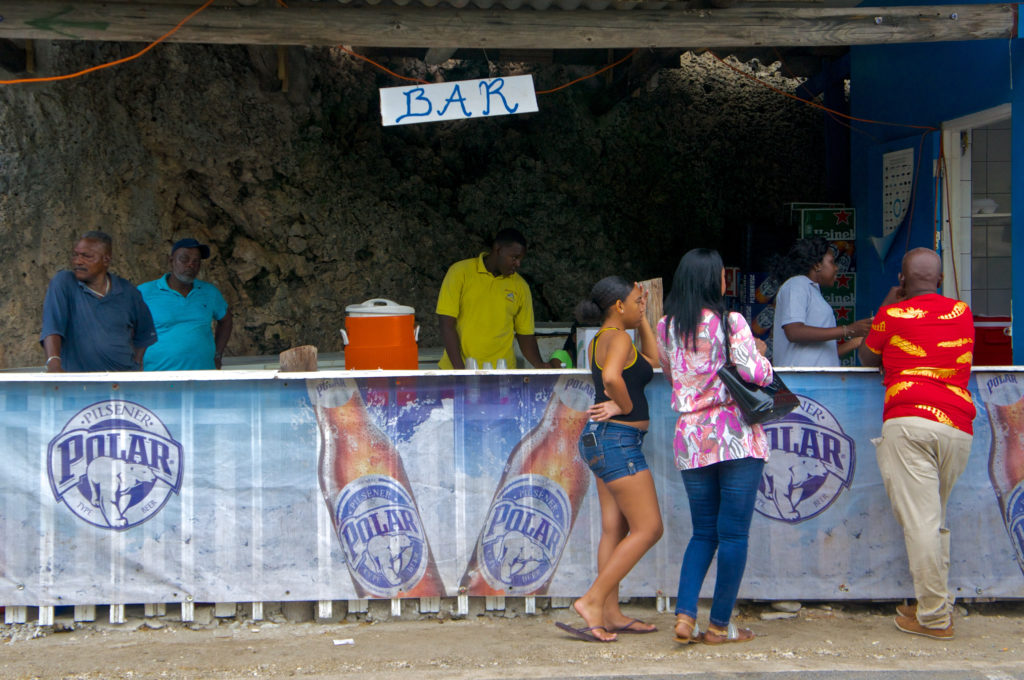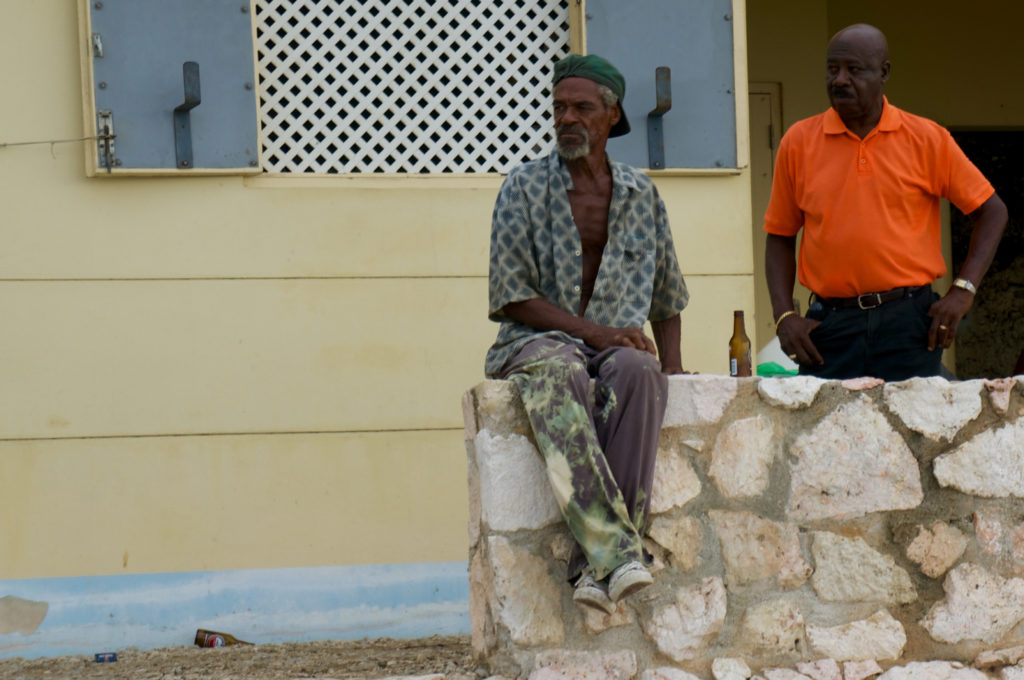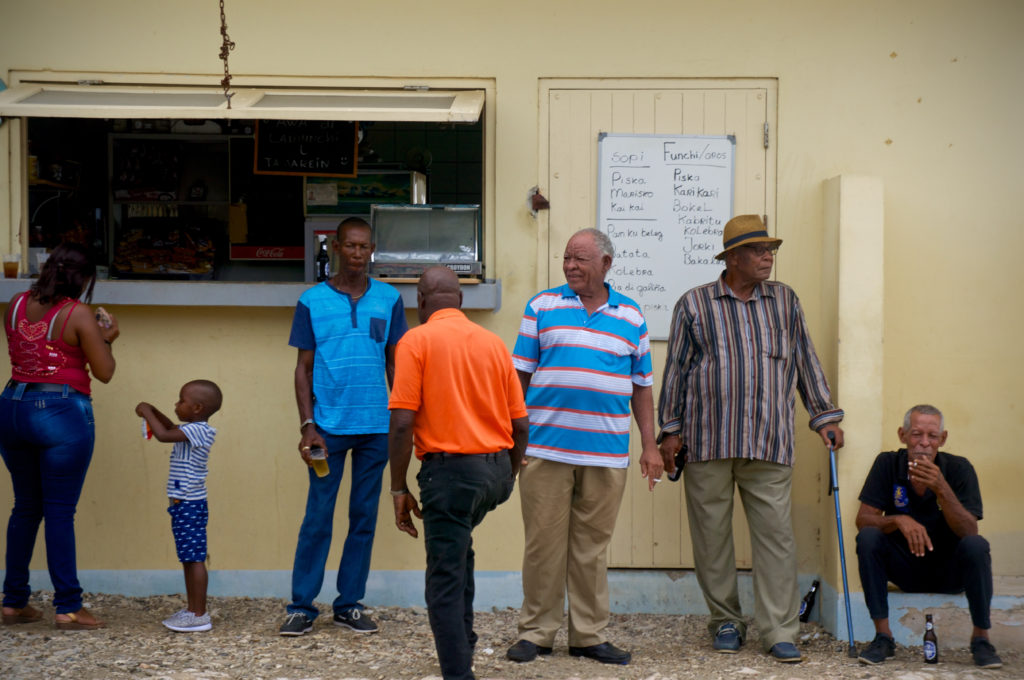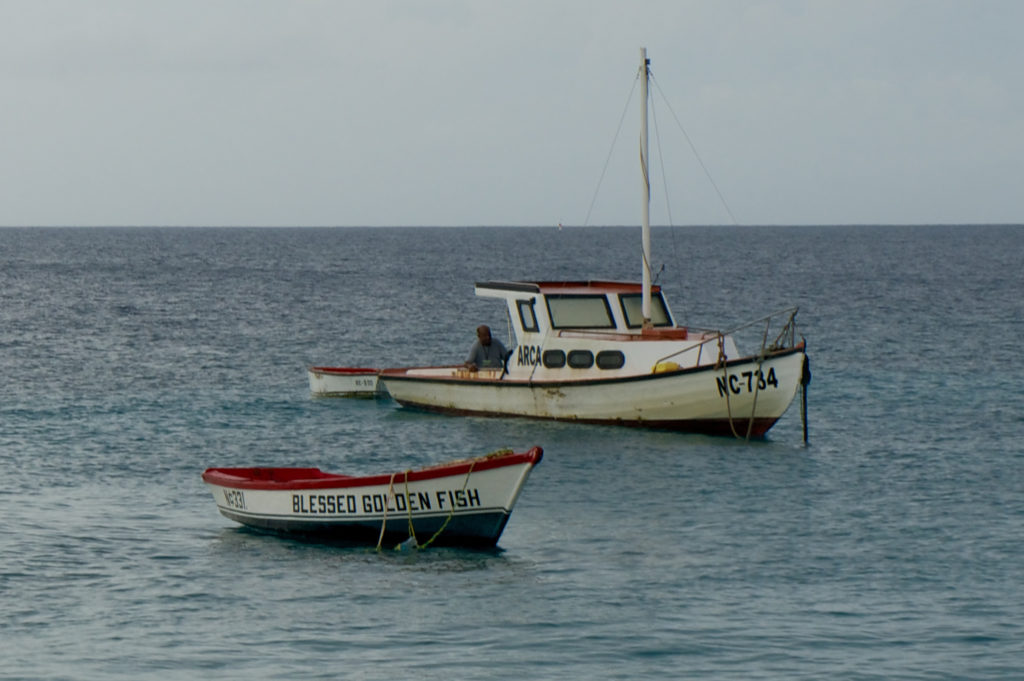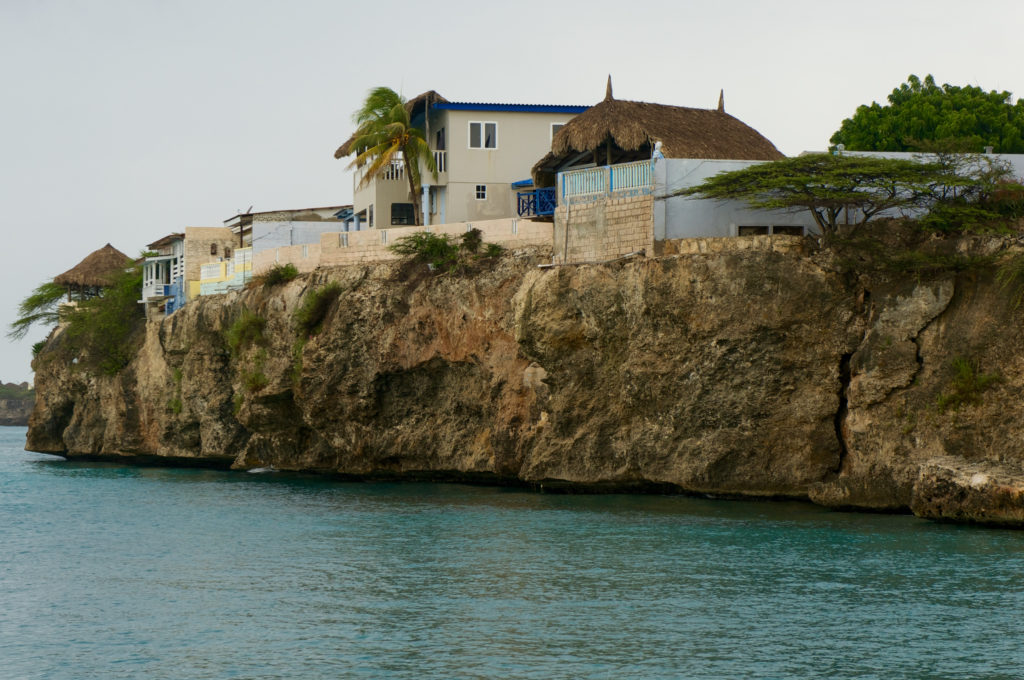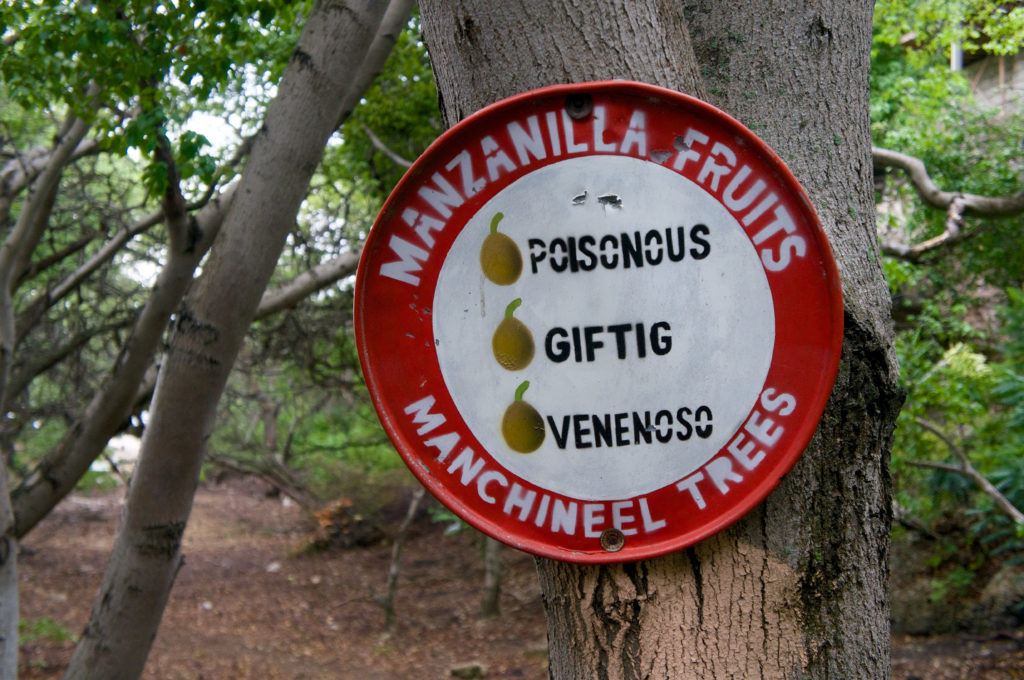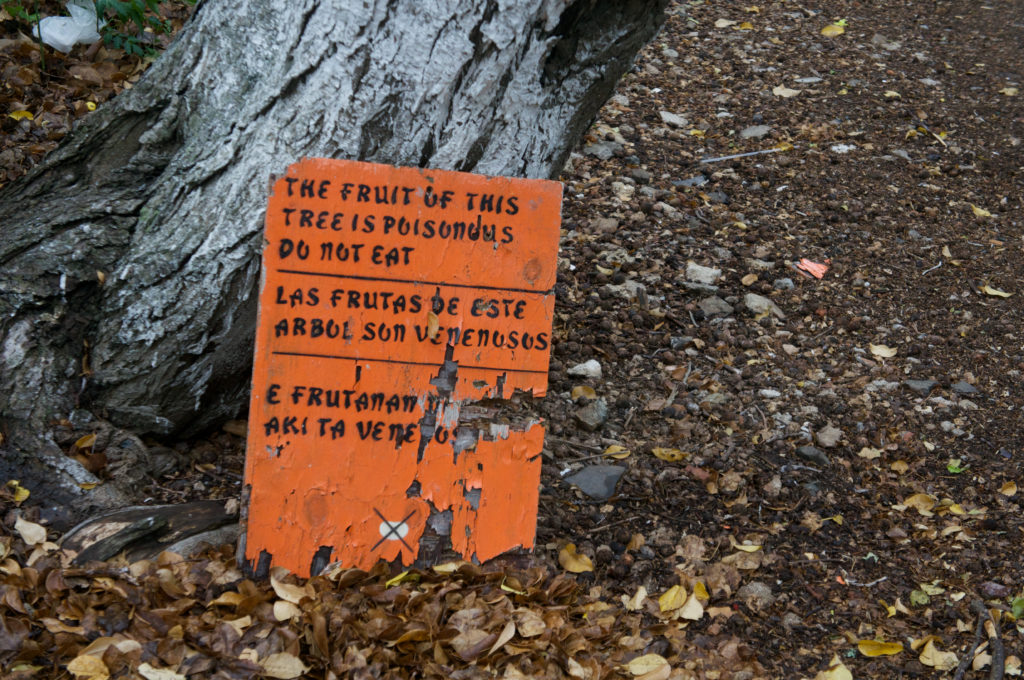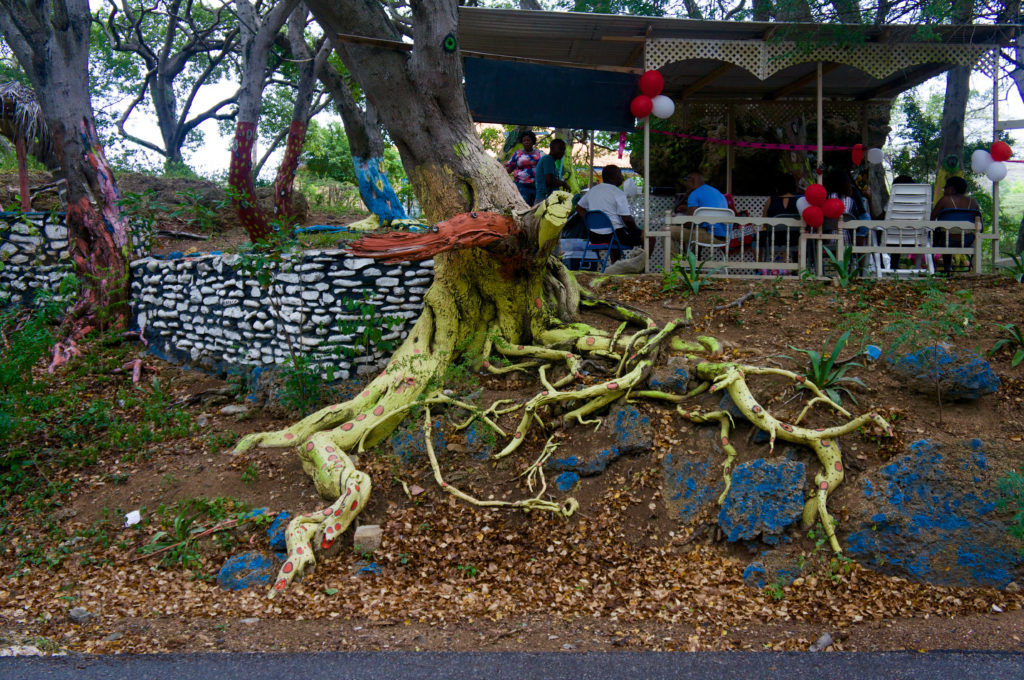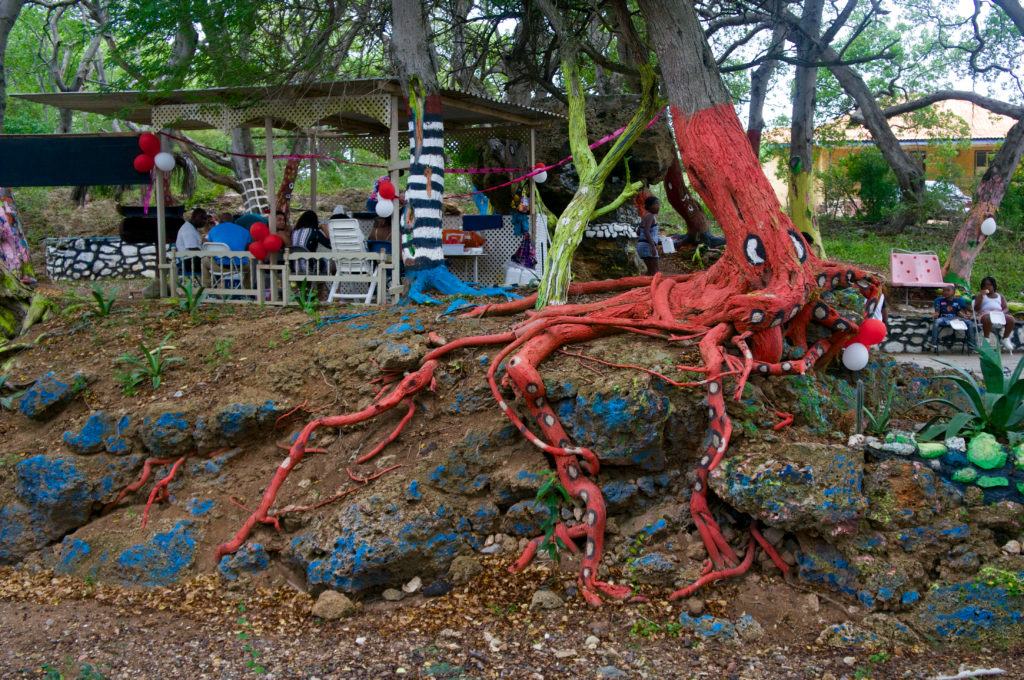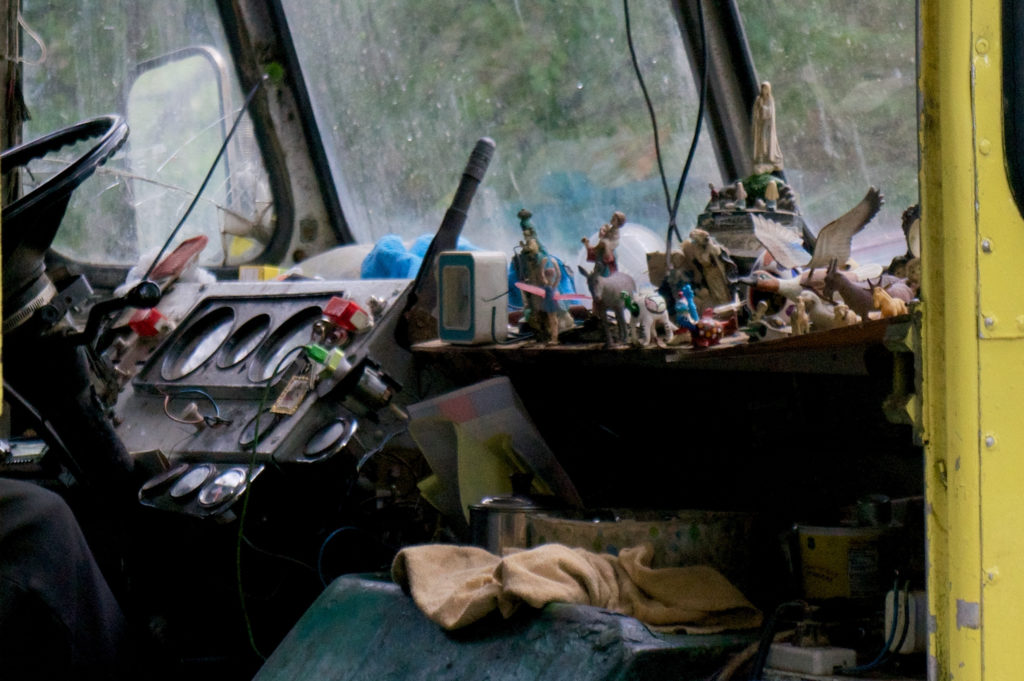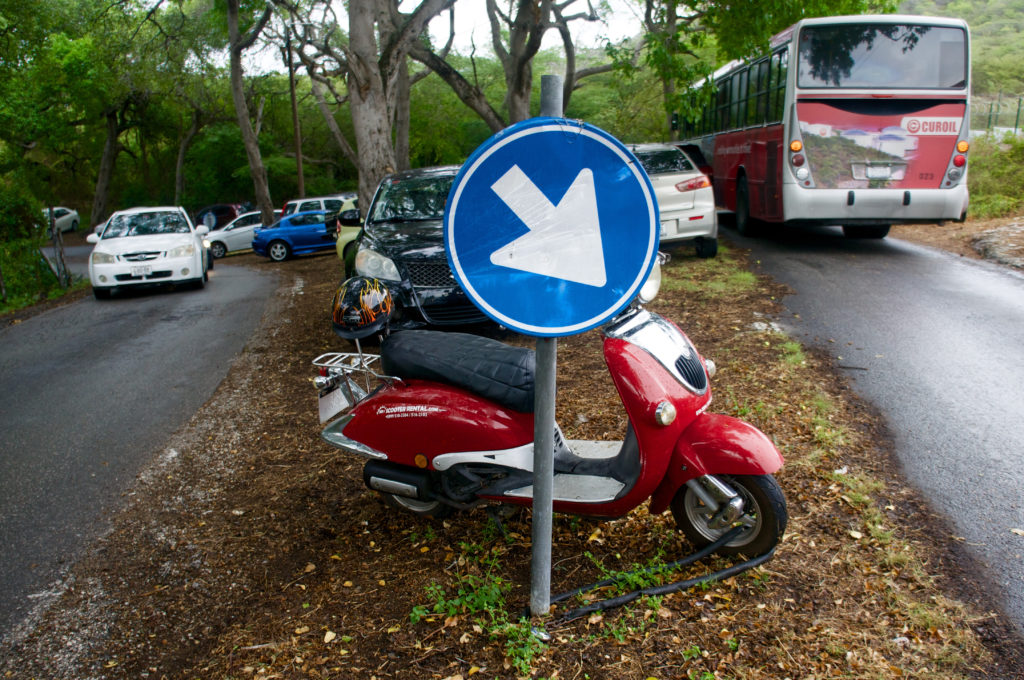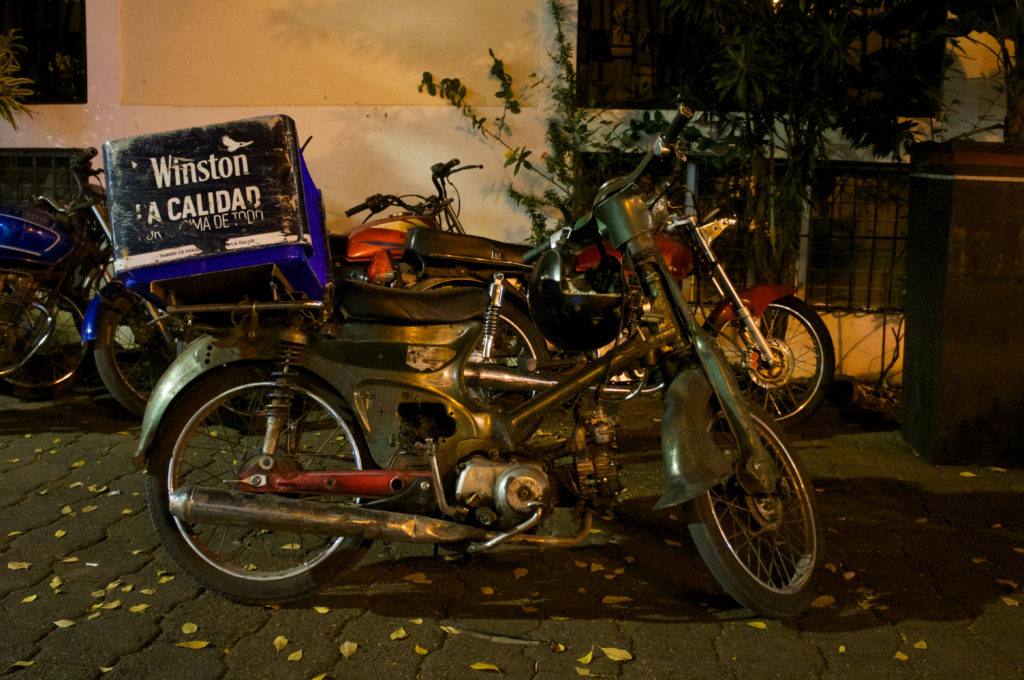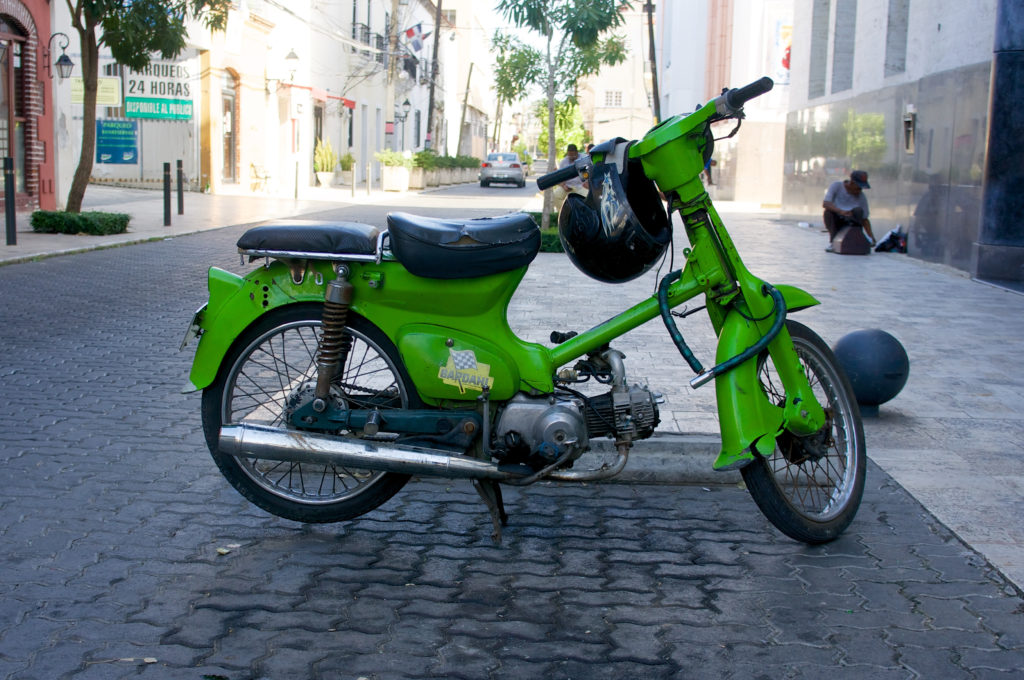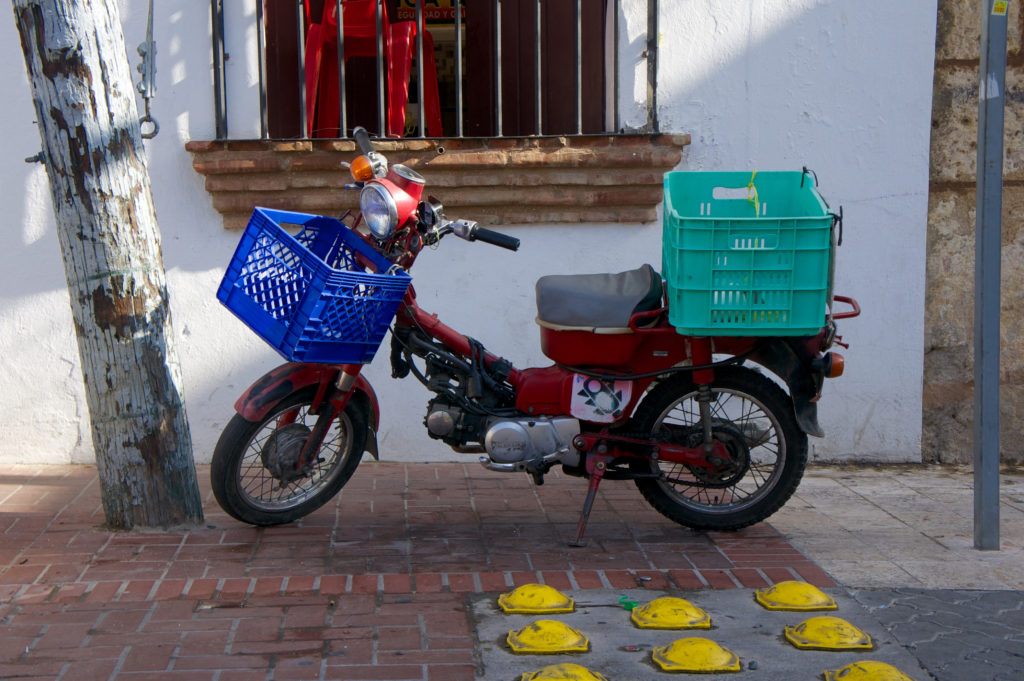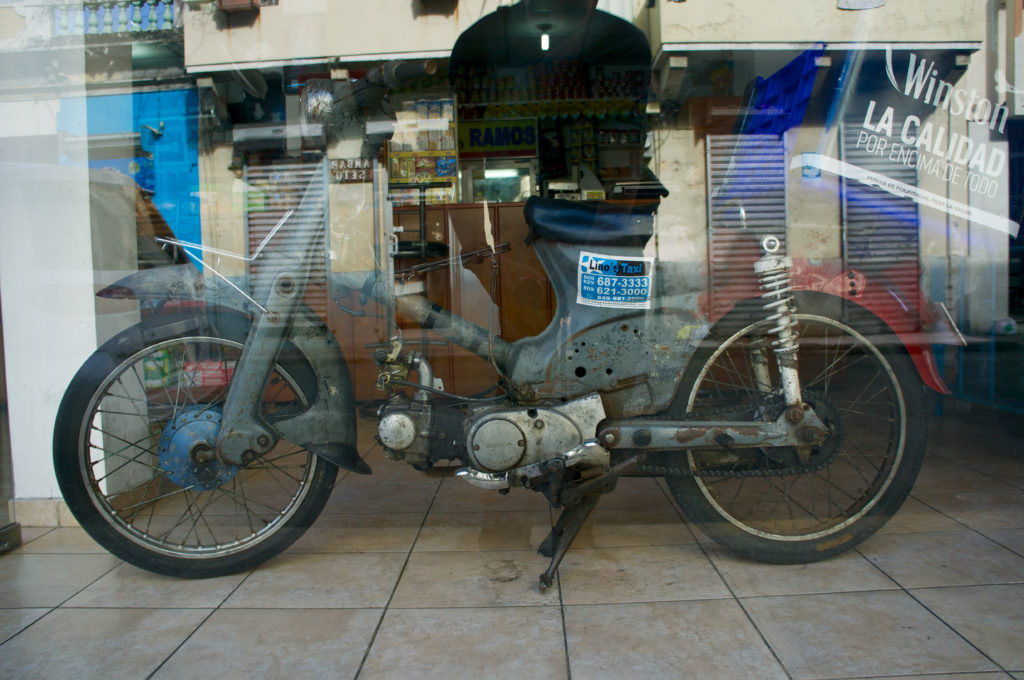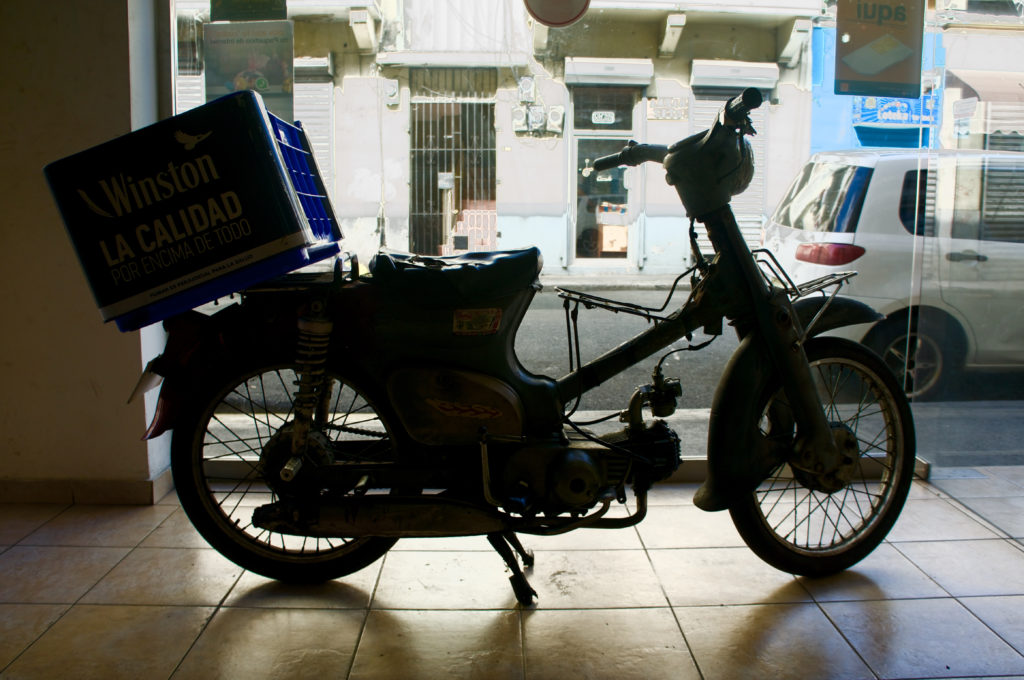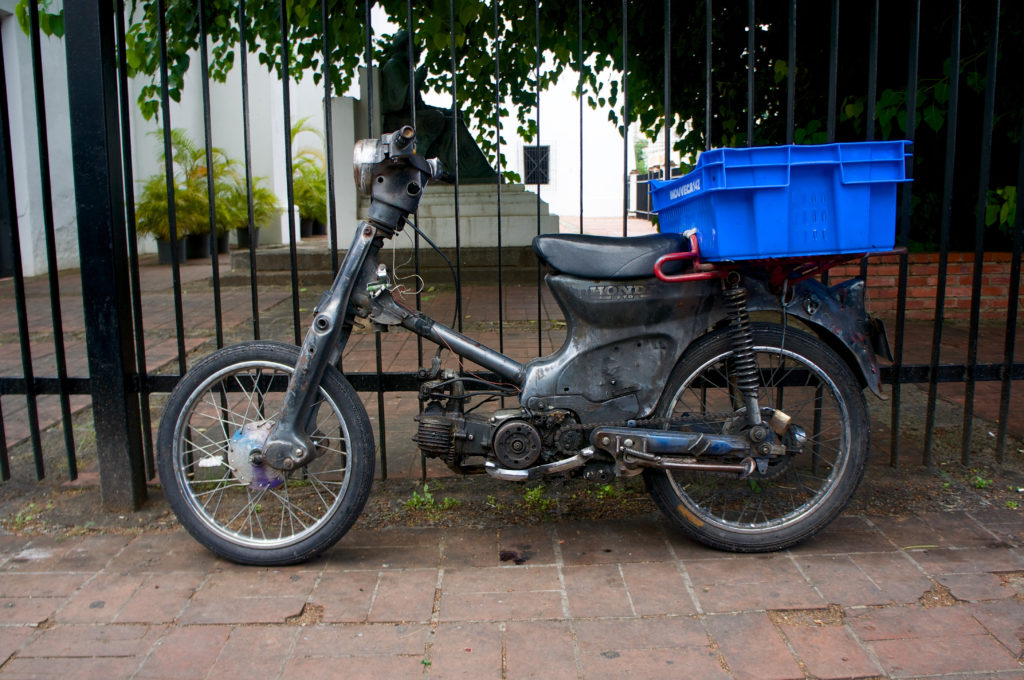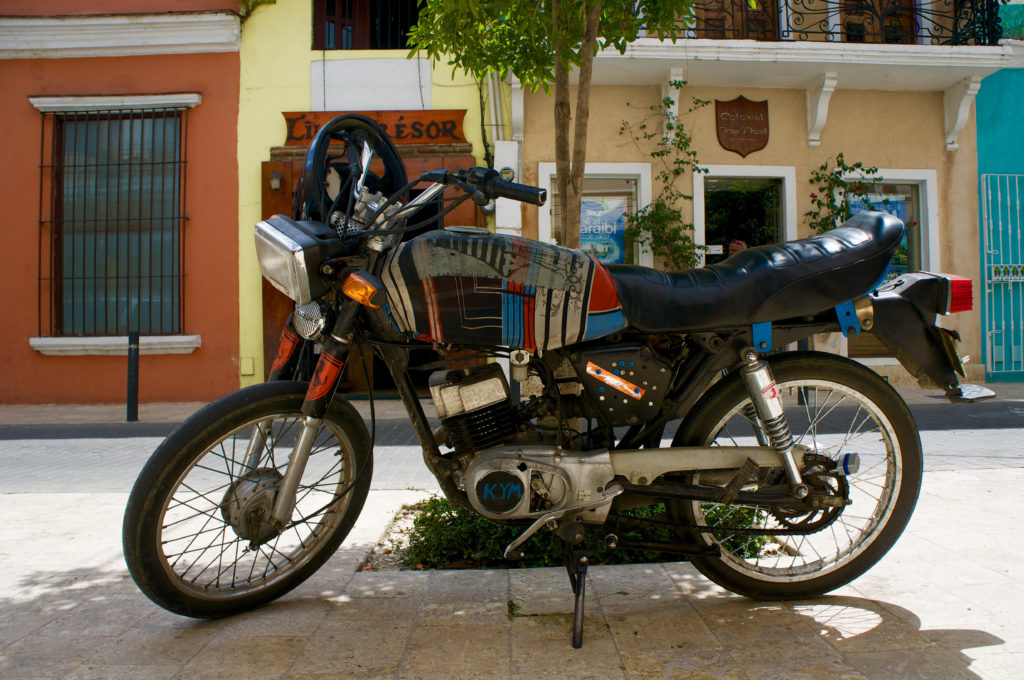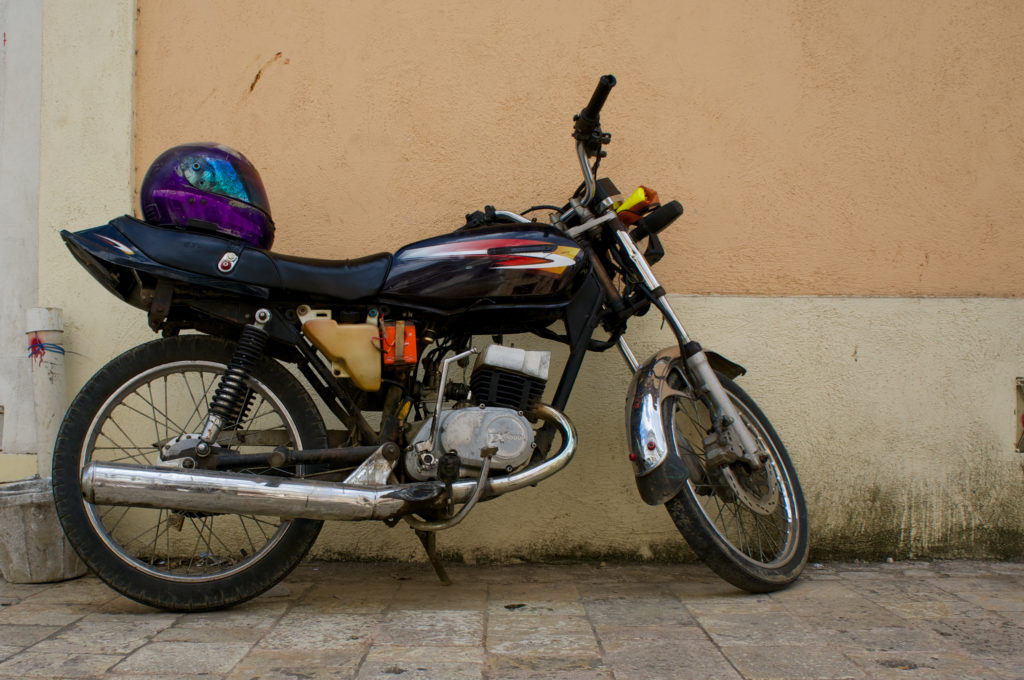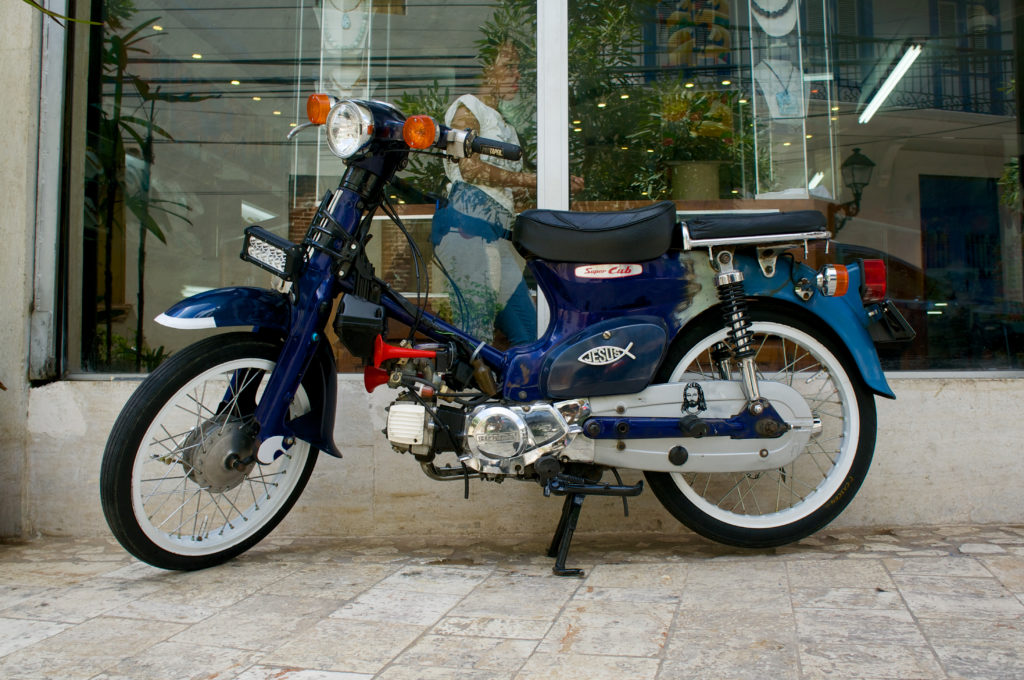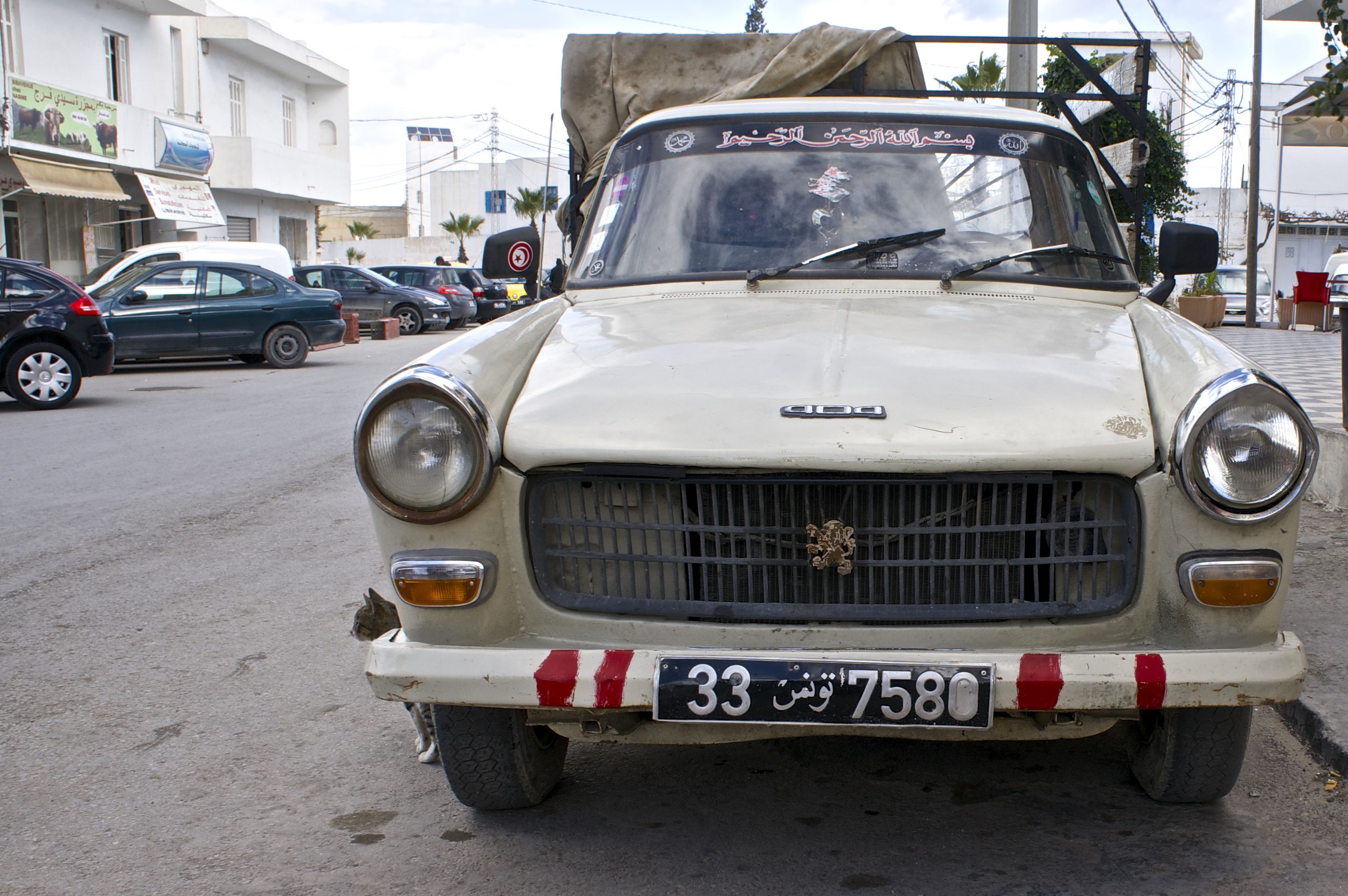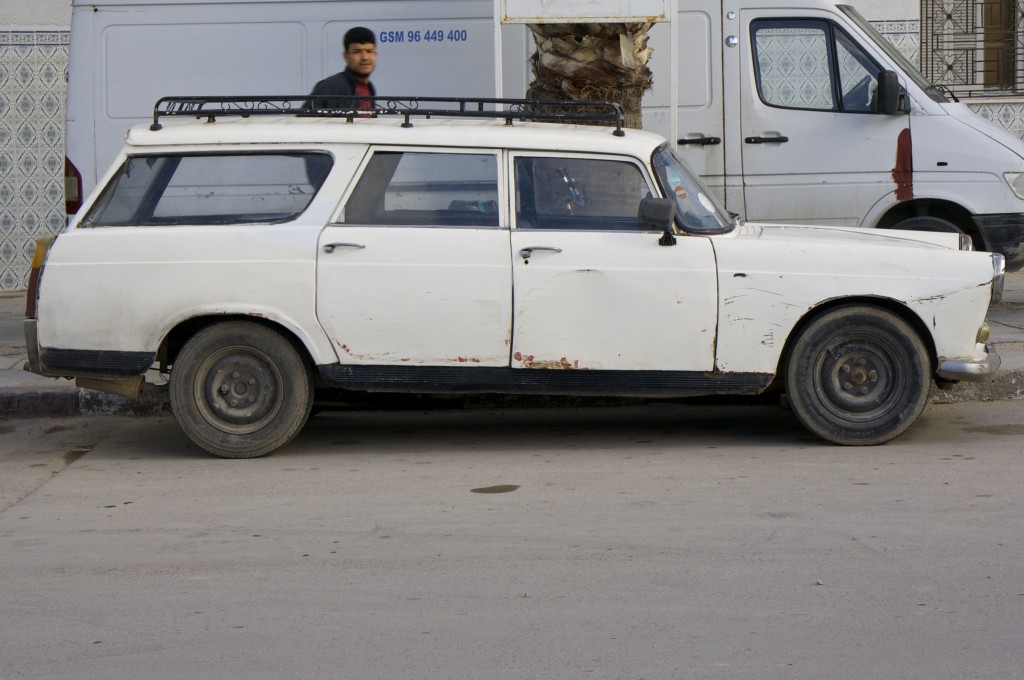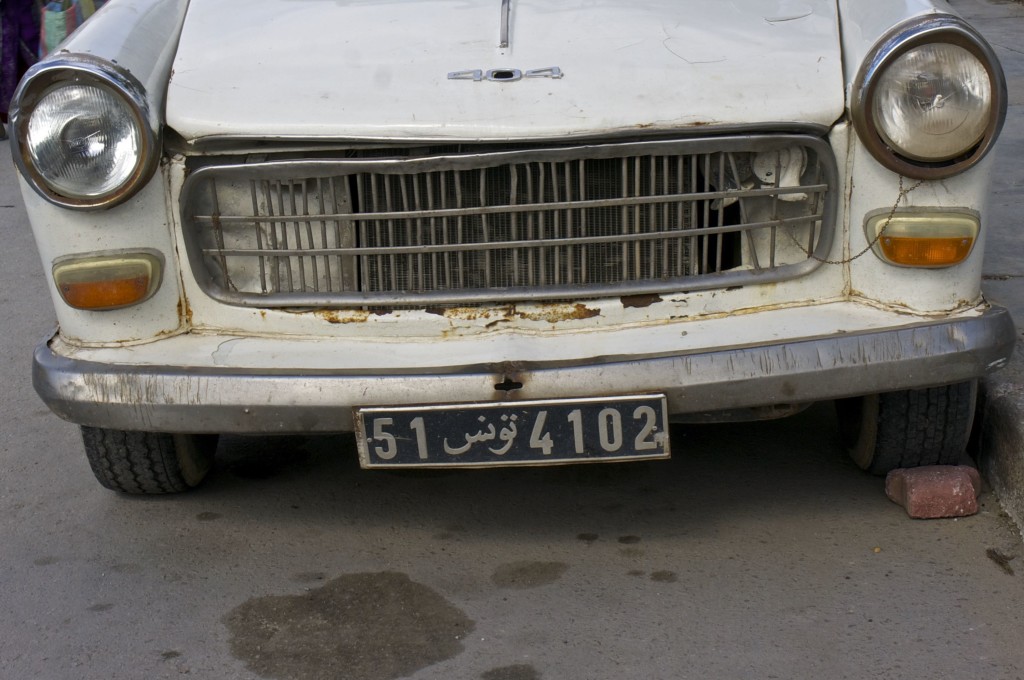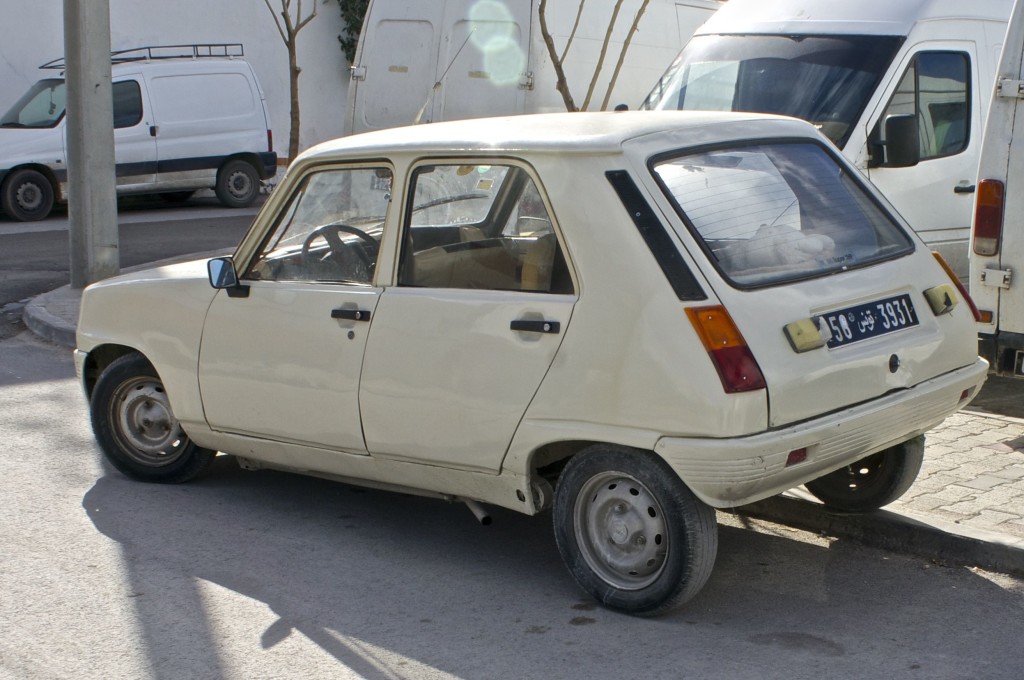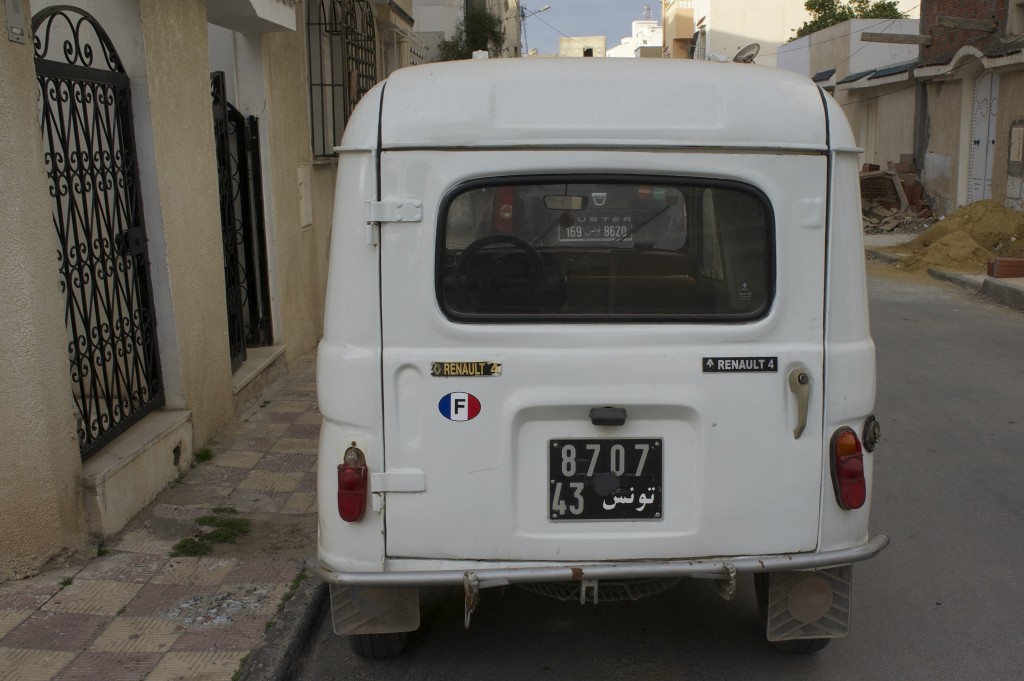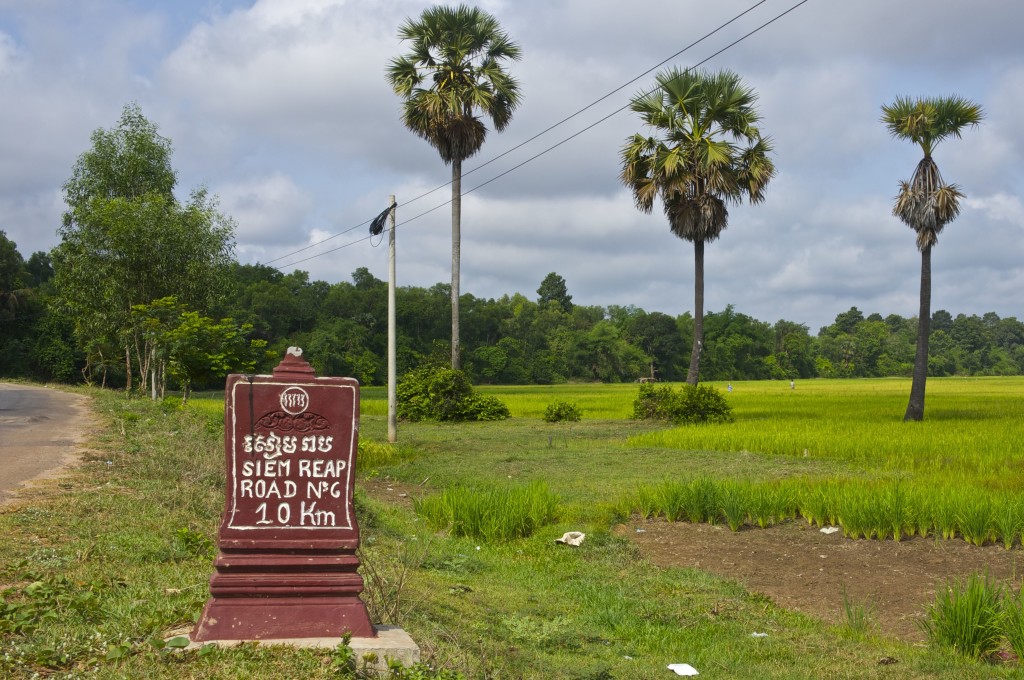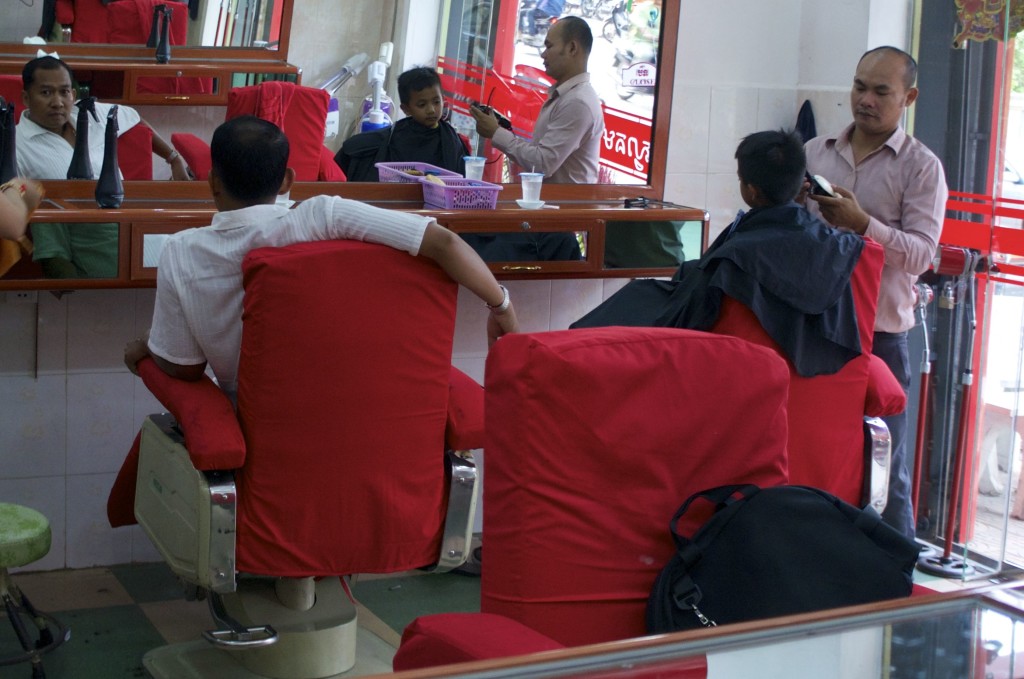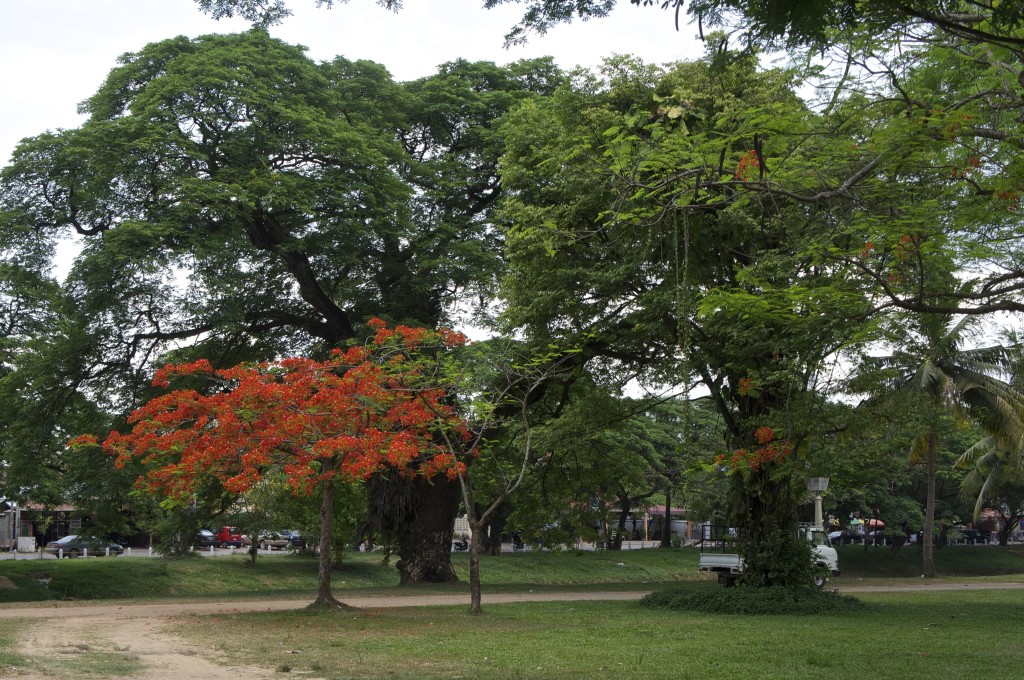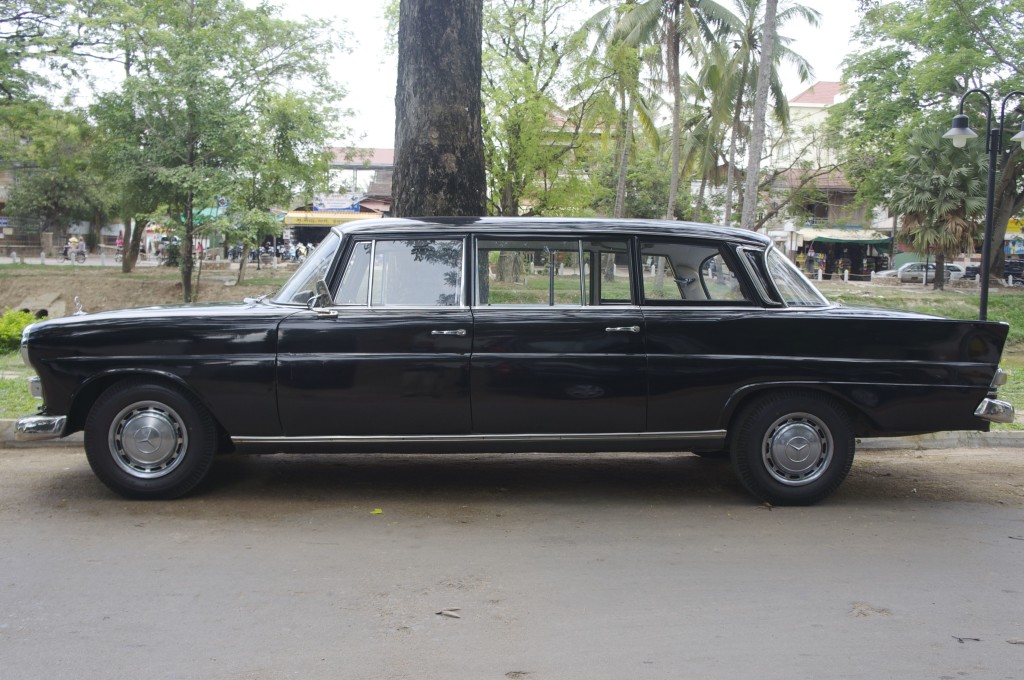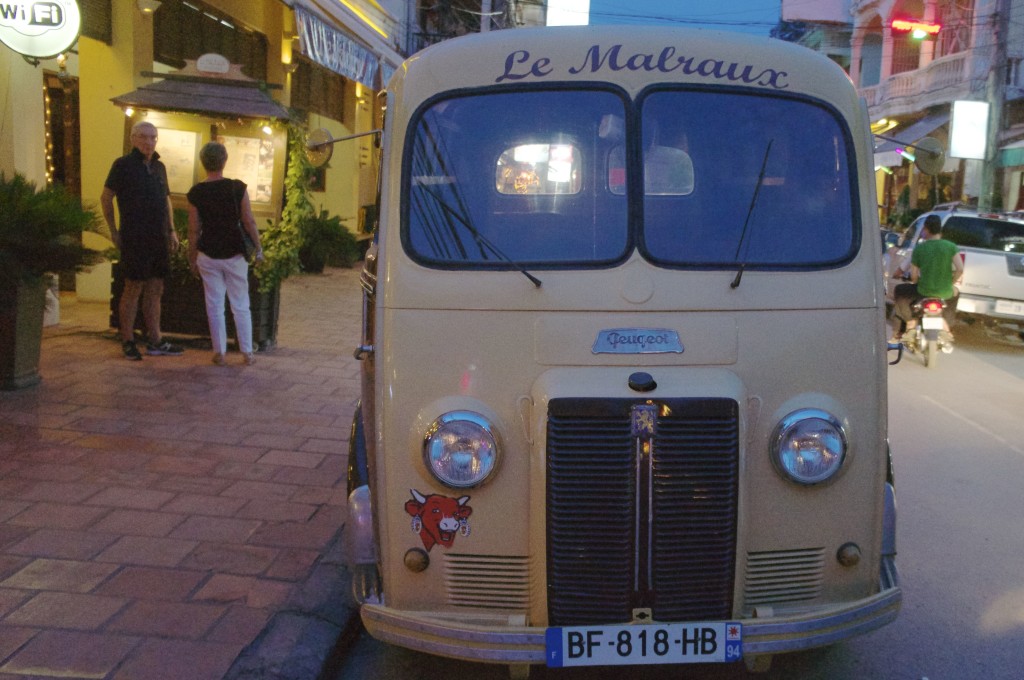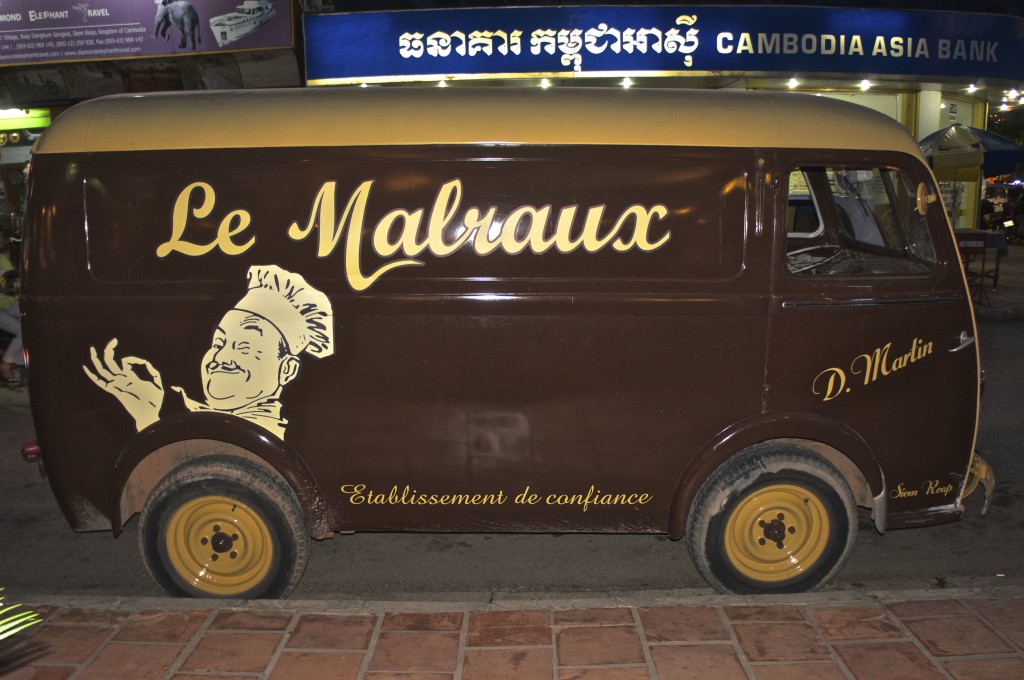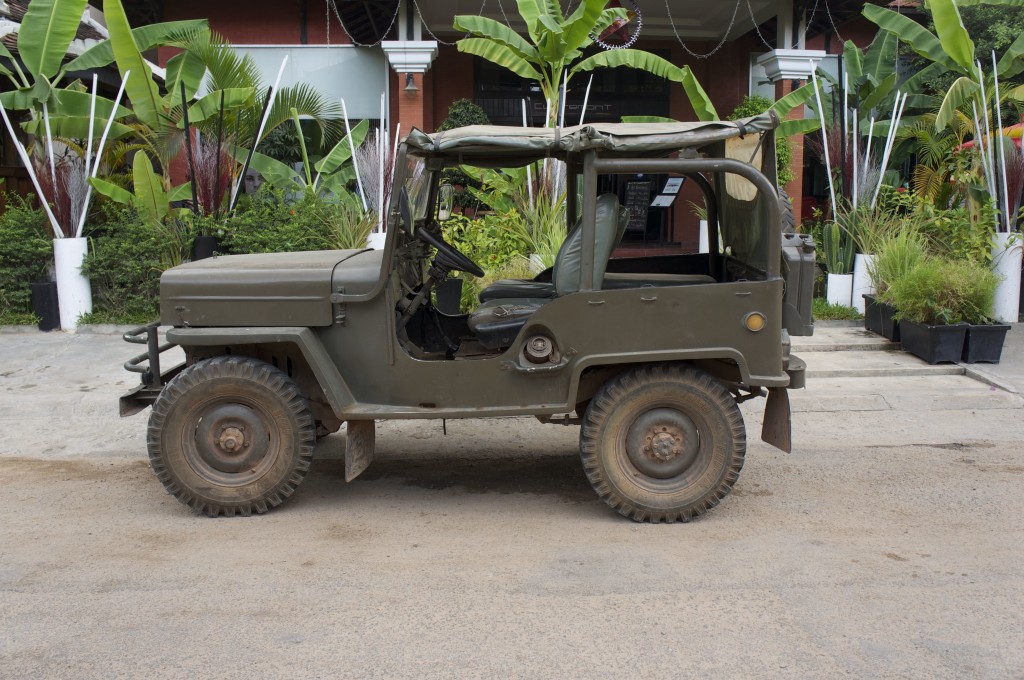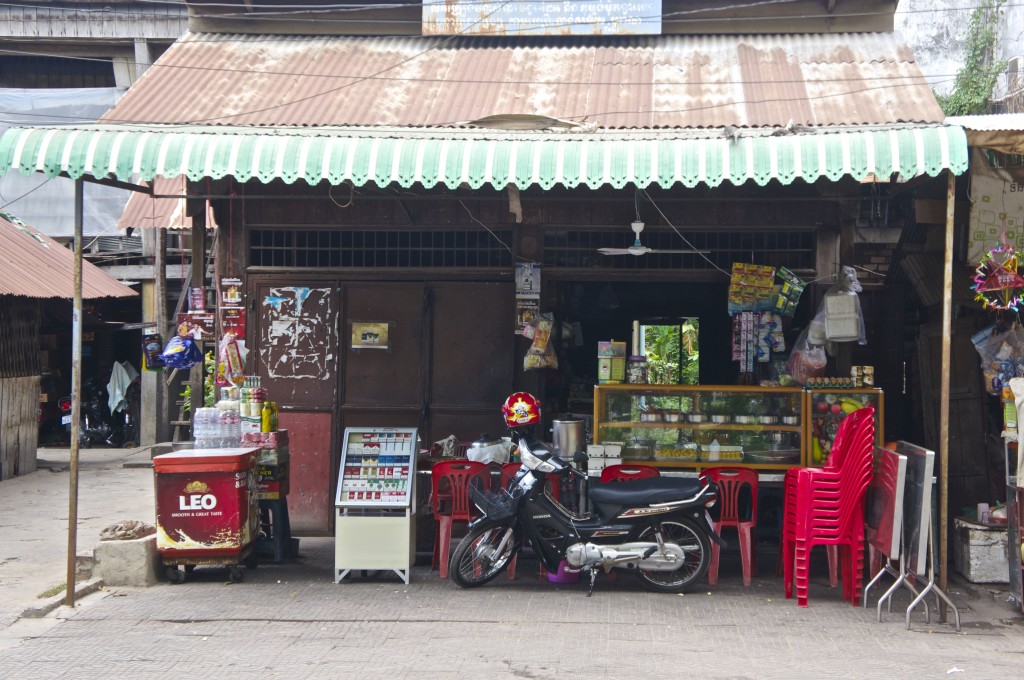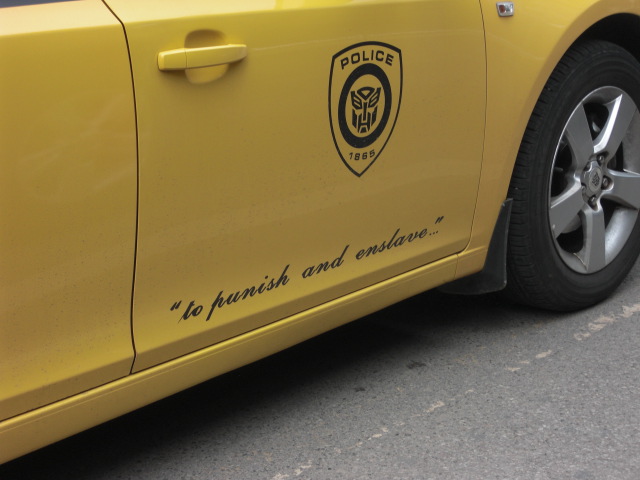One of the joys of living in San Juan is that there is no shortage of scenes. There’s a street art scene, a rat rod scene, a food truck scene, a Jeep scene, a punk scene, a cocktail scene, a surfing scene, a baseball scene — and a motorcycle scene. That last was on full display last Sunday.
I was enjoying Sunday brunch at Tresbé on Calle Loíza when I heard the basso profundo throb of big bikes — a whole lot of them heading east. I grabbed my camera and started shooting. As the first motorcycle came into focus, I immediately knew what I was seeing. It was the Distinguished Gentleman’s Ride, a global event where men (and a few women) get dressed in their dapper finery and ride to raise money for prostate cancer research and other worthy causes.
There was an eclectic mix of motorcycles: Japanese, American, European, Indian, choppers, boulevard cruisers, and cafe racers.
This being the Caribbean, some people took the dress code pretty liberally — or ignored it altogether. But most of the riders at least made the attempt to look both distinguished and gentlemanly.
I especially liked this guy on the chopper and was sorry not to have gotten a better pic of his ride. I haven’t seen pants like those since the Nixon administration!
This was the only sidecar I saw. These two definitely win the prize for cutest couple.
I was surprised that there were so many Royal Enfields in the mix. But maybe I shouldn’t have been. Royal Enfields are as natty and anachronistic as the Distinguished Gentlemen themselves. First manufactured in 1901, they developed a reputation in World War II as being nearly indestructible. “Built like a bullet” was the strange simile that was used to describe them. The company was eventually sold and moved to Chennai, India where it continues as “the oldest global motorcycle brand in continuous production.” Royal Enfield is surely a niche player in the global motorcycle market. But for whatever reason, they’re popular here in Puerto Rico. There’s even a dealership here in San Juan.
Not everyone was riding a big bike – or for that matter, a motorcycle at all.
I’ve ridden a motorcycle while wearing a tuxedo, so I think I could fit right into this group. Next year?
